|
||||
|
Protect Thacker Pass
Lithium Mine Destroying Sacred Indigenous Land in Nevada
Milwaukee:
Showtimes at AMC Mayfair, 2500 N. Mayfair Road
Native Bidaské with Patty Loew & Alton 'Sonny' Smart on the Significance of the New Film 'Bad River'
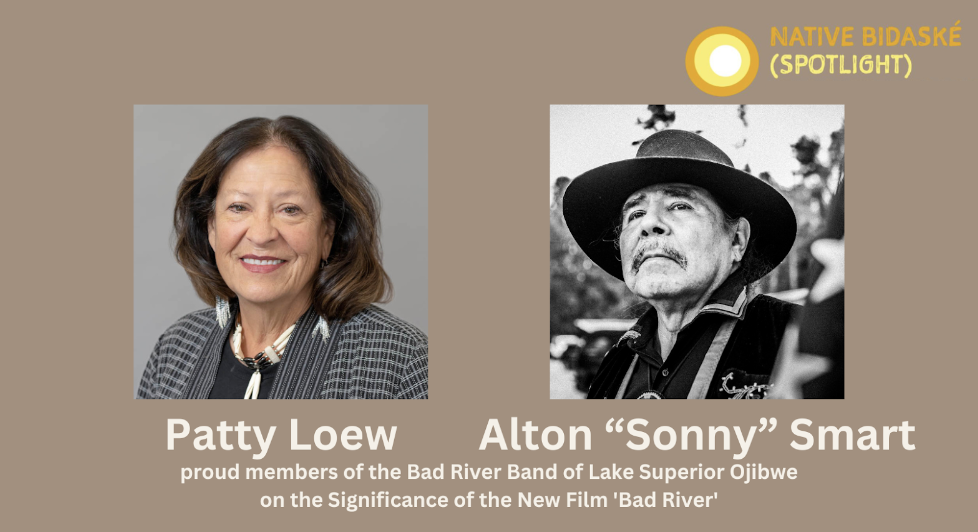
- BY NATIVE NEWS ONLINE STAFF
- MARCH 06, 2024
Native News Online Founder and Publisher Levi Rickert sits down with Patty Loew and Alton "Sonny" Smart, members of the Wisconsin Bad River Band of Lake Superior Ojibwe. This discussion will delve into the profound significance of the upcoming film "Bad River” by filmmaker Mary Mazzio.
The fight against the Enbridge Line 5 pipeline is symbolic of the ongoing struggle faced by the Bad River Band of Lake Superior Chippewa Indians to safeguard their ancestral lands and waters. This struggle takes center stage in "Bad River," a powerful new documentary set to premiere on March 15. Narrated by Indigenous activist and model Quannah Chasing Horse, the film promises to be a stirring testament to resilience and resistance.
In our discussion, we'll explore the historical and cultural context surrounding Indian Affairs; the enduring dependence on the Bureau of Indian Affairs; and the far-reaching consequences of resource extraction. We'll emphasize the importance of understanding the rich history and culture of the Bad River community, raising awareness, and fostering activism among tribal members to protect sovereignty and cultural preservation.
Patty Loew, an esteemed member of the Bad River Band of Lake Superior Ojibwe, brings her expertise as a professor, author, and documentary filmmaker, focusing on Ojibwe treaty rights, cultural expression, and environmental activism. Meanwhile, Alton "Sonny" Smart, a revered elder of the Bad River Band, will share his insights as a spiritual leader, educator, and Vietnam War Veteran, bridging cultural divides and enriching communities through his unique blend of cultural knowledge and Western approaches.
Catch this enlightening episode of Native Bidaské LIVE airing at Noon ET on Native News Online's Facebook, X (Twitter), or YouTube channel.
Tribes condemn start of uranium mining at Pinyon Plain Mine south of Grand Canyon
Native American Literary Great N. Scott Momaday (Kiowa) Has Walked On
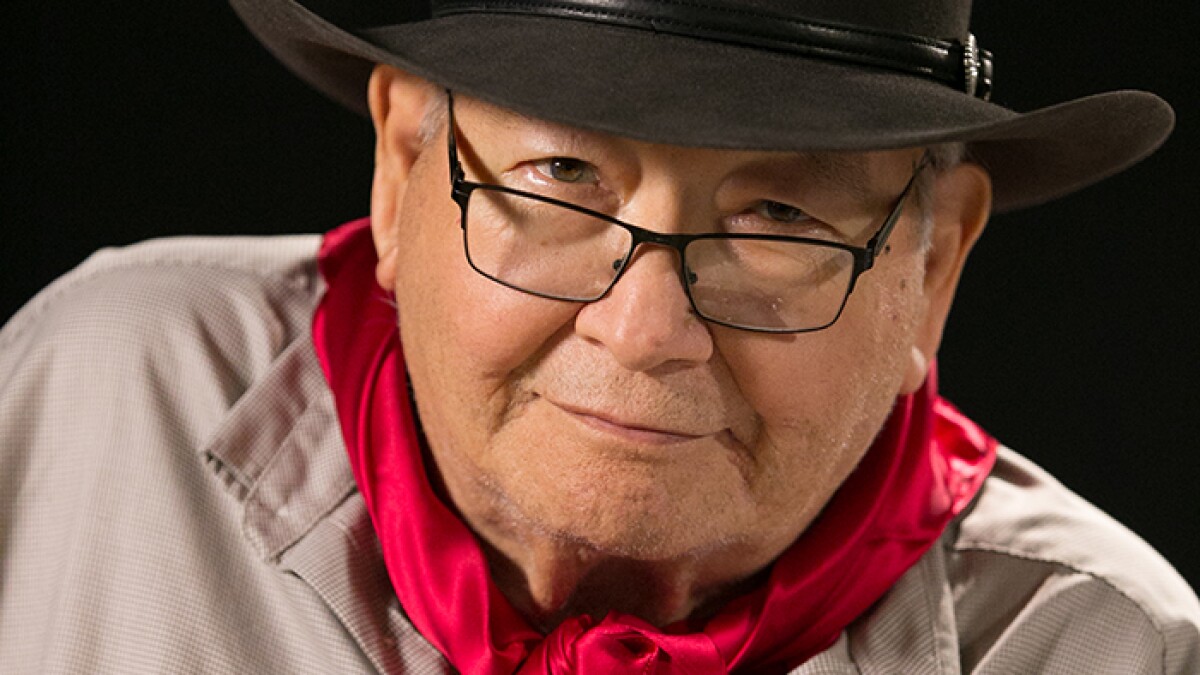
N. Scott Momaday (Photo/Facebook)
- BY LEVI RICKERT JANUARY 29, 2024
N. Scott Momaday (Kiowa/Cherokee), one of the most prolific contemporary Native American writers, has passed away at his home in Santa Fe, New Mexico. Momaday, who was awarded a Pulitzer Prize for Fiction in 1969 for his debut novel “House Made of Dawn,” was a storyteller, poet, and educator. He was 89.
Momaday is credited with a resurgence of Native American literature and earned his place as the founding member of the “Native American Renaissance.” After receiving the Pulitzer Prize, he wrote “The Way to Rainy Mountain” in 1976.
Throughout his illustrious career, he became known for Indigenous oral tradition, which he taught during his 35 years as an educator. Momaday earned a Ph.D. in English literature from Stanford University and went on to teach at several universities, including the University of California-Santa Barbara and the University of California-Berkeley. He retired as Regents Professor at the University of Arizona.
In 2007, Momaday was presented a National Medal of Arts award by President George W. Bush. At the time of the award presentation, the White House said Momaday was given the award for “for his writings and his work that celebrate and preserve Native American art and oral tradition.”
In 2019, Momaday was featured on a PBS “American Masters” documentary, “Words from a Bear,” in which he discussed his belief he was a reincarnation of a bear connected to the Native American origin story around Devils Tower in Wyoming. The film captured the essence of Momaday’s writing with a strong emphasis on Native American oral history. "Words From a Bear" was produced and directed by Jeffrey Palmer (Kiowa).
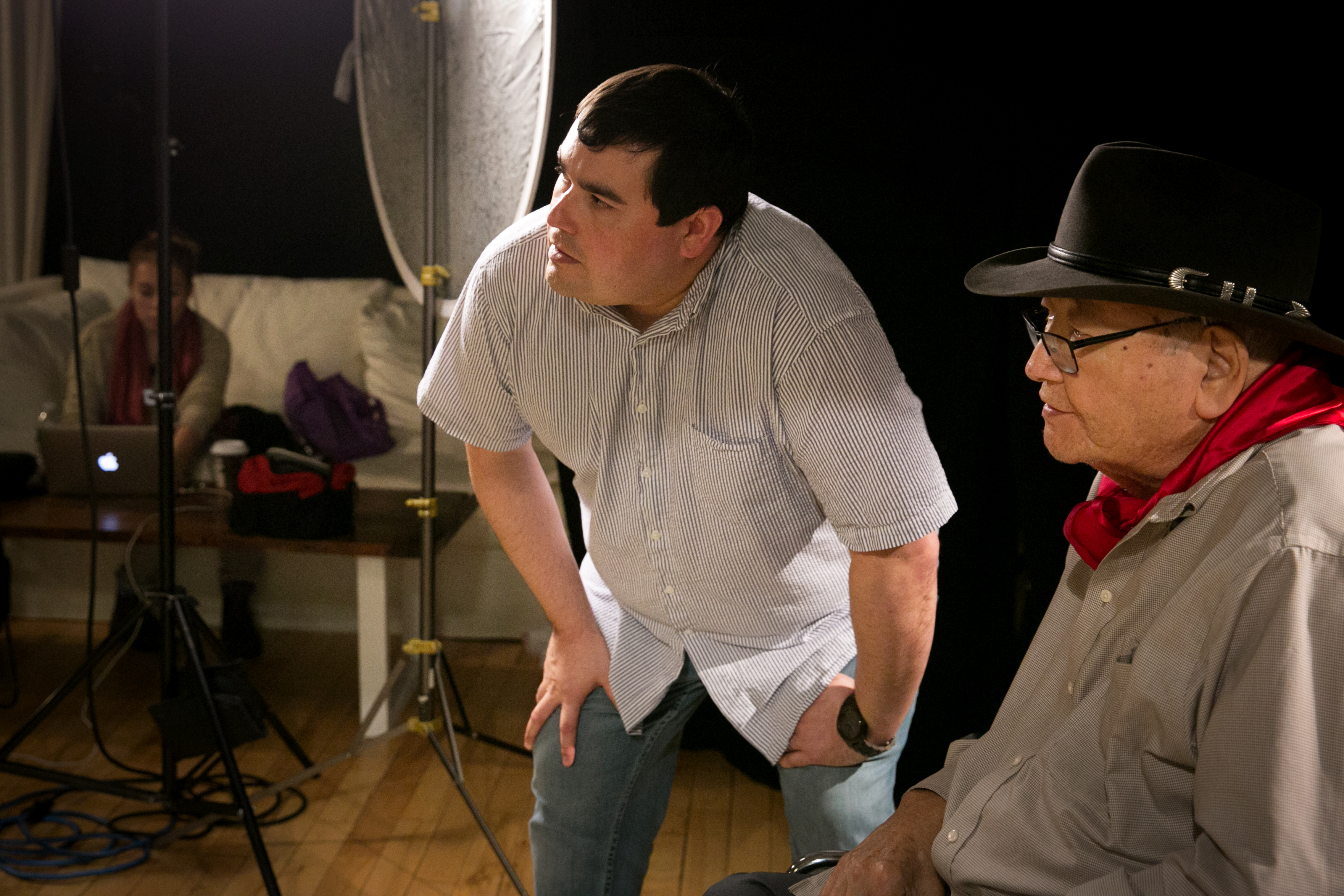
Palmer, who teaches film at Cornell University, told Naive News Online on Monday that he worked with Momaday for three and half years to complete the documentary, which allowed him to spend a lot of time with the author.
"He made Native American literature and storytelling palatable to the rest of the world. He opened countless doors of Native American storytellers," Palmer said. "He was a changemaker and an icon. For the Kiowa people it was profound to see our stories told to the rest of the world. I put Momaday up there with Whitman and Faulkner. He was a great American writer, not only a Native American writer."
Born on February 27, 1934, in Lawton, Oklahoma, at the Kiowa and Comanche Indian Hospital, Momaday’s father was full-blooded Kiowa, and his mother was Cherokee, English, Irish, and French. He spent several years growing up at the Jemez Pueblo in New Mexico, which influenced much of his writing.
In addition to the Pulitzer Prize, Momaday was the recipient of numerous awards and honors, including the Academy of American Poets Prize; the National Medal of Arts; the Ken Burns American Heritage Prize; the Dayton Literary Peace Prize Foundation’s Richard C. Holbrooke Distinguished Achievement Award; and the 2021 Frost Medal for distinguished lifetime achievement in poetry.
- BY ELYSE WILD
- JANUARY 31, 2024
Join Levi Rickert, publisher of Native News Online on Native Bidaské as he interviews Jeffrey Palmer (Kiowa) on his feature film, "N. Scott Momaday: Words from a Bear."
On Monday, January 29, 2024, we learned of the passing of N. Scott Momaday (Kiowa) at the age of 89. Momaday is credited for being the founding member of “Native American Renaissance.” Momaday won a Pulitzer Prize for Fiction in 1969 for his novel “House of Dawn.”
In honor of Mr. Momaday’s passing, we interviewed filmmaker Jeffrey Palmer, a good creator of the feature film for this week’s Native Bidaské.
About "N. Scott Momaday: Words from a Bear"
N. Scott Momaday (Kiowa/Cherokee), one of the most prolific contemporary Native American writers, has passed away at his home in Santa Fe, New Mexico. The documentary "N. Scott Momaday: Words from a Bear" explores the life and mind of Navarro Scott Momaday, a Kiowa novelist, short-story writer, essayist, and poet who won the National Medal of Arts. Momaday's Pulitzer Prize-winning novel "House Made of Dawn" marked a breakthrough for Native American literature. The film uses original animation, historical photos, and interviews with prominent figures, including indigenous authors, actors like Robert Redford and Jeff Bridges, and Joy Harjo, the first Native American U.S. Poet Laureate, to delve into Momaday's creative core. Directed by Jeffrey Palmer, a member of the Kiowa Tribe, the documentary provides a personal exploration of Native American life in the 21st century, reflecting on Momaday's influence as a founding figure of the Native American Renaissance in art and literature.
Momaday's work, while rooted in his heritage, also raises universal questions about origins and collective memories, offering insights into the challenges faced by Native American artists in the 20th and 21st centuries. The film premiered at the Sundance Film Festival in 2019.
About Jeffery Palmer
Jeffrey Palmer, an award-winning filmmaker and proud member of the Kiowa Tribe of Oklahoma. Renowned for his groundbreaking debut feature, "N. Scott Momaday: Words from a Bear," Palmer invites us on a mesmerizing journey into the lives of Indigenous people in twenty-first-century America. Premiered at the 2019 Sundance Film Festival and nationally aired on PBS's American Masters, the film earned an Emmy nomination in 2020, securing its place as an Outstanding Documentary or Non-Fiction Series.
Palmer's storytelling finesse is underscored by his environmental advocacy, as evident in the Ted Turner Award-winning film. From the prestigious Bill and Melinda Gates Short Film Challenge to screenings at global venues, Palmer's cinematic brilliance has earned accolades and grants from institutions like the Sundance Institute and Ford Foundation. A member of elite industry organizations, Palmer, an associate professor at Cornell University, is currently weaving his magic on his second feature film, "Ghosts," promising another chapter in his impactful cinematic legacy.
Don't miss this insightful and engaging edition of Native Bidaské LIVE this Friday, February 2, 2024, at 12 p.m. Noon Eastern Time. Watch this episode on Native News Online's Facebook, Twitter, or YouTube channel.
Walt Bresette, Ojibwe leader and environmental hero, in Wisconsin Conservation Hall of Fame
Ojibwe environmental and treaty rights activist Walt Bresette will be inducted posthumously into the Wisconsin Conservation Hall of Fame (WCHF) in a virtual ceremony on April 17, 2024. Bresette will join over 100 members inducted since the Hall of Fame’s inception, including Aldo Leopold, Nina Leopold Bradley, John Muir, Gaylord Nelson and Menominee Nation environmentalist Hilary Waukau, Sr.
Bresette (1947-1999) was a member of the Red Cliff Band of Lake Superior Ojibwe, and a long-time treaty rights and environmental activist, author, artist, storyteller, organizer and public speaker. He was an outspoken advocate for Ojibwe treaty rights who asked people to come to the spring boat landings in northern Wisconsin during the spearfishing conflict (1980s-1990s). Walt wondered why people chose to go so far away to show support for others when there were urgent calls for solidarity closer to home. Bresette said, “You don’t have to go to Nicaragua to witness, you can witness in your own backyard.”
Walt was a founder of the Witness for Non-Violence for Treaty and Rural Rights in Northern Wisconsin, modeled on the group Witness for Peace, which was active during the Central American wars (especially in the Contra-backed areas of Nicaragua). The Wisconsin witnesses documented anti-Indian harassment and violence at the boat landings. By 1992, the efforts of the witnesses and a federal court injunction against anti-Indian harassment decreased the violence at the boat landings.
Bresette was a prolific organizer who brought together Native American and rural white communities through organizations like the Midwest Treaty Network, the Upper Great Lakes Green Network and the Wisconsin Greens. He said that the fight between Natives and non-Natives over the walleye harvest diverted attention from the far more significant pollution threat to the Wisconsin fishery for both groups from proposed metallic sulfide mining.
One of his most powerful messages was that Ojibwe treaty rights provided the greatest environmental protection against destructive metallic sulfide mining, like the Crandon and Ladysmith mining projects, in the ceded territory of the Lake Superior Ojibwe tribes. This was not because the tribes had a direct claim to minerals –—they definitely did not — but because mining threatens the environment, and a threat to the environment is a threat to Ojibwe fishing, hunting and gathering rights. Treaty rights provide the Ojibwe tribes with legal standing in federal courts to protect the habitat of fish, deer and wild rice.
Bresette was a leader in the successful resistance to the controversial Crandon mine next to the Sokaogon Ojibwe reservation (2003) and he led the grassroots campaign to enact Wisconsin’s “Prove It First” Mining Moratorium law. The law, signed by Governor Tommy Thompson on Earth Day, 1998, prohibited the opening of a new mine in a sulfide ore body until a mining applicant could prove they had not polluted surface water or groundwater in any of their previous mines in the U.S. or Canada.
As a non-violent Ogichidaag (protector of the people), Bresette was active in the opposition to the Rio Tinto/Kennecott copper mine next to the Flambeau River near Ladysmith, Wisconsin. In 1991, the Lac Courte Oreilles Ojibwe and the Sierra Club obtained a preliminary injunction against mine construction because the Wisconsin Department of Natural Resources (DNR) had failed to conduct an environmental assessment for endangered resources in the Flambeau River. Despite the restraining order, Kennecott continued construction activity at the site.
Bresette said that the State of Wisconsin had failed to protect the interests of the Lake Superior Ojibwe and decided to take action to protect the environment.
I witnessed Bresette climbingover a 10-foot security fence at the Flambeau mine site carrying a club once used by Black Hawk, and “counted coup” on a giant earth mover. The act of hitting the machine was a symbolic scoring of victory against one’s enemies but did no physical damage. In his trial for trespassing on mining company property, Bresette said the mining permit was illegal because the State of Wisconsin did not consult the Lake Superior Ojibwe about their treaty rights in the fishery of the Flambeau River before it issued the mining permit.
I interviewed Bresette for my documentary film, Anishinaabe Niijii (Friends of the First People), about the Indian and environmental resistance to the proposed Flambeau mine. Bresette and his good friend Sandy Lyon were co-founders of Anishinaabe Niijii. He said, “Someday our children are going to rise up and say, ‘Where were you when they poisoned my river?’” His words were prescient. The mine operated from 1993 to 1997. A Flambeau River tributary that crosses part of the reclaimed project site remains polluted to the present day.
Bresette and the Ogichidaa from the Bad River Ojibwe reservation were more successful in 1996 when they blockaded trains traveling through the reservation carrying sulfuric acid to a nearby copper mine in Michigan’s Upper Peninsula. The Ogichidaa were concerned that the tracks were unsafe and that a spill from tankers would poison reservation water and the largest wild rice stand in the Great Lakes region. The blockade lasted 28 days and prevented the transport of sulfuric acid across the reservation as a federal mediator conducted talks between the Ogichidaa, the tribe and the railway. The blockade and the assertion of tribal sovereignty protected the Bad River’s sacred wild rice beds and won the support of surrounding communities.
Walt was a charismatic storyteller who was a regular keynote speaker at the many Protect the Earth festivals, organized by Sandy Lyon, on Indian reservations throughout northern Wisconsin. His vision of a Seventh Generation Constitutional Amendment adopted the Iroquois concept that required Iroquois leaders to think about how today’s decision will affect the seventh generation into the future. The amendment promoted “the rights of the people to use and enjoy air, water, sunlight, and other renewable resources determined by the Congress to be common property, nor shall such use impair their availability for the future generations.”
Sandy Lyon summarized Bresette’s influence eloquently in a radio tribute broadcast on Woodland Community Radio WOJB-FM on the Lac Courte Oreilles reservation: “He was like the North Star and the people followed him.”
OPB
Documentary ‘Downwind’ shows deadly consequences of nuclear testing on tribal lands
Western Shoshone Principal Man Ian Zabarte, who lost his family members to diseases caused by radiation exposure, says it amounts to racism against Native Americans that the U.S. government detonated more than 900 atomic bombs on his ancestors’ land in secret from 1951 to 1992.
|
|
|
|
|
|
 |
|
|
Walk with our Ancestors will honor Menominee heritage
STAND WITH STANDING ROCK!
Standing Rock Sioux and Cheyenne River Sioux Tribe
The Dakota Access Pipeline (DAPL) is a risky oil pipeline that threatens drinking water and was built without adequate environmental analysis or Tribal consultation. We currently have a critical opportunity to shut it down once and for all!
Between now and November 13th, the Army Corps of Engineers has a comment period. On November 1 & 2nd there are public hearings in Bismarck, ND. We need you to join us to Stand with Standing Rock again and call on the Biden Administration to shut down DAPL.
The Standing Rock Sioux and Cheyenne River Sioux Tribe and grassroots water protectors have led the resistance against the dirty Dakota Access Pipeline (DAPL) since the beginning. Now, thanks to their continued resistance and leadership, thousands of us have a chance to go on the record with our support and submit official public comments with the U.S. Army Corps of Engineers against this dirty oil pipeline.
Following mass Indigenous-led protests and international outcries against the pipeline in 2016 and 2017, the Obama Administration correctly recognized the Corps’ obligation to evaluate the project in an environmental impact statement (EIS) process before approval. Soon after taking office, the Trump Administration reversed course, ignored the law, and pushed the project forward.
Now, following a 2021 court order, the Army Corps is taking public comments on its recently released Draft Environmental Impact Statement (DEIS) on the pipeline -- providing us with an important opportunity to continue to Stand with Standing Rock and demand the shutdown of a pipeline that never should have been built to begin with.
Submit your official written comment to the Army Corps of Engineers and make sure you personalize it -- tell them why it’s time to shut down the Dakota Access Pipeline once and for all!
Comments are due by 11:59pm EST on Monday, November 13
*Please draft your own original comments based on the talking points below and other resources linked above. They can be short and heartfelt, but please do not just copy and paste language from this toolkit – duplicate comments will be counted by the Army Corps as a signal comment, so be sure to make it your own.
Public comments can be sent to USACE by US Postal Service or Emailed with subject line: “Comments on the DAPL DEIS” to: [email protected] or at the following address:
Attn: Brent Cossette
U.S. Army Corps of Engineers
CENWO-ODT-N
1616 Capitol Avenue
Omaha, NE 68102
DON'T CUT AND PASTE!
For more information: https://www.nwo.usace.army.mil/Missions/Dam-and-Lake-Projects/Oil-and-Gas-Development/Dakota-Access-Pipeline/
The Dakota Access Pipeline has been operating for several years but is still being contested by the Standing Rock Sioux and Cheyenne River Sioux Tribes. DAPL faced immense international opposition during construction, with tens of thousands of people joining in resistance on the ground. This new Environmental Impact Statement (EIS) was ordered by the Courts and is as a result of the Cheyenne River Tribe’s continuing legal fight against the project.
In 2016, communities across the world protested in solidarity with the Standing Rock Sioux and Cheyenne River Sioux Tribe against the Dakota Access Pipeline (DAPL) and the threat it posed to the Tribes' drinking water supply.
In 2017, the Obama Administration correctly recognized the Corps’ obligation to evaluate DAPL in an EIS before approval. Trump reversed course, ignored the law, and quickly pushed the project through before the courts were able to confirm that an EIS was required.
Just a couple years later, DAPL expanded capacity from 570,000 barrels/day (one of the biggest pipelines in North Dakota) to 1.1 million barrels per day (one of the biggest pipeline capacities in the whole country). In 2021, the D.C. Circuit Court affirmed the Corps violated environmental protection laws due to a lack of federal environmental review for DAPL, revoked the easement, and ordered the Corps to complete an EIS -- but fell short of stopping the flow of oil through the pipeline.
Throughout this fight water protectors have been resisting this risky pipeline and all of the harm that comes with it running through their communities. From destroying sacred sites, putting drinking water at risk, increasing the problem of Missing and Murdered Indigenous Relatives (MMIR) that comes with fossil fuel project construction, and exacerbating climate change, DAPL has already caused real harm and should be shut down.
Clearwater County jury finds 68-year-old 'water protector' guilty in misdemeanor trial

While receiving no jail time, the trial of Jill Ferguson hinged on her resisting arrest during a July 29, 2021, incident. Ferguson maintains she acted in defense of the Mississippi River
BAGLEY — A Clearwater County jury found a 68-year-old Milwaukee woman guilty of a misdemeanor obstruction charge following a three-day trial on Wednesday, Aug. 30.
Jill Ferguson was arrested on July 29, 2021, after refusing to comply with officers’ demands to clear an area near crews’ dewatering equipment during the construction of Enbridge’s Line 3 replacement project.
Ferguson, according to the criminal complaint, was among a group of people near the Mississippi River near a caged water pump and advised officers she would not leave the area unless forced to do so.
TAKE ACTION >>> https://act.amnestyusa.org/page/96017/action/1...
|
Where Sustaining the Forest Also Sustains a Tribal Economy

Mike Lohrengel looks up in awe at trees he has known for 30 years. “This is one of the most beautiful places I know. This forest has it all: the most species, the most diversity. Many trees I know individually. Look at this one behind us. It’s got a split way up there. I’ll never forget that tree till I die.”
It is a love affair, for sure. But Lohrengel is no tree hugger, out to preserve a special, pristine place. He is a timber harvest administrator, overseeing logging in one of the most remarkable working forests in the United States—nearly a quarter-million acres of trees that occupy almost the entire Menominee Indian Reservation in northern Wisconsin.
“The forest looks pristine,” he says, as a flurry of snow falls through the open canopy. “These big maples and basswoods are around 150 years old. But we have been logging here for over a century, and we still have more trees than when we started.” In June, the tribe’s forestry officials began exploring the potential for selling the carbon accumulating in the forest on the U.S.’s growing market for carbon-offset credits.
There are probably more than a billion trees today in the Menominee forest, which is an hour’s drive west of Lake Michigan. We were there in late February, the day after the biggest snowstorm of the winter. We were standing near the Menominee’s sawmill in Neopit village, from where trucks move the lumber across America to make everything from basketball courts to domestic furniture and handcrafted toys. But even close to the mill, big healthy trees with the highest potential price tag get to grow old.
The trick, says Lohrengel, is husbandry for the long term. “We come in every 15 years, take out the weak trees, the sick trees, and the ones that are dying, but leave the healthy stock to grow some more and reproduce,” he says. “We don’t plant anything. This is all natural regeneration, and the way we do it the forest just gets better and better.”
Lohrengel is not a Menominee tribal member. He is the son of a pulp-mill worker who has been devoted to the tribe’s harvesting philosophy since first working on the reservation inventorying the trees in 1990. Most U.S. foresters, he says, are trained to cut the best trees and leave the sick ones behind. The result is a forest with deteriorating genetic stock. But the Menominee are “doing the opposite, and making the forest healthier.”
“We make our decisions based on what’s best for the forest,” says Lohrengel’s boss, the Menominee’s veteran head forester Ron Waukau. “Our logging schedules and management are purely for the forest. I am really humbled to be able to work like that. The sawmill knows what it will get and sells accordingly.”
For the Menominee, says head silviculturist Tony Waupochick, it is not just a matter of maintaining the volume of timber. “We are also managing the forest to maintain its diversity and integrity, and to keep it healthy for wildlife.”
The Menominee adopted their enlightened approach soon after the creation of the reservation in 1854. It has worked spectacularly well, says Patrick McBride, sales director of the Pennsylvania-based lumber company MacDonald & Owen, which buys most of the output from the Menominee sawmill. In almost 170 years, the tribe has harvested nearly twice the forest’s former volume of timber, yet it still has 40% more standing wood than when they started. “And by leaving the best trees, the old and sick lumber they harvest is now better than the best from most everyone else,” says McBride, who pays a premium price for it.
The 235,000-acre Menominee reservation is 93% forested, and visible from space as a dark green block of trees.
Professional U.S. foresters today like to say that America’s shift from blindly clear-cutting trees to managing them more sustainably began in the 1890s, with the founding of the Biltmore Forest School in North Carolina, followed in 1900 by the founding of the Yale Forest School. But the Menominee were decades ahead of them, argues Michael Dockry, who researches American Indian and Indigenous natural resource management at the University of Minnesota. In the mid-19th century, he writes, they already practiced “a new form of forest management that stood in stark contrast to the cut-and-run harvesting occurring through the rest of Wisconsin and the United States.” It was “the first sustained-yield forest management system in the country.”
The 235,000-acre Menominee reservation is today 93% forested and famously visible from space as a dark-green block of maple and aspen, birch and hemlock, ash and basswood, red oak and white pine, surrounded by dairy pastures long since cleared of trees by immigrant farmers. Some trees are more than 200 years old and more than 200 feet high. Around a quarter are left unharvested, mostly in swamp areas, at sacred sites, and in important wildlife refuges, says Waukau. Foresters come from across the world to walk the reservation with him and see how the Menominee harvest the rest. “Basically, we are taking tribal knowledge and blending it with today’s ecological science.”
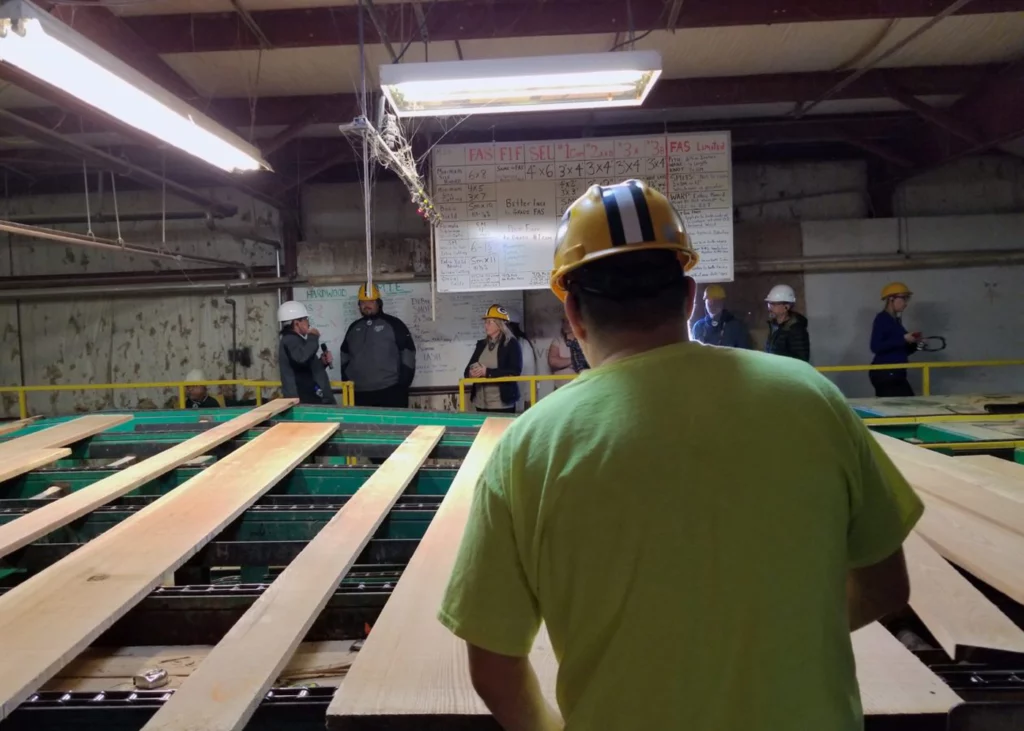
The Menominee forest was among the first to be certified by the Forest Stewardship Council (FSC), after its formation in 1993. That recognition of sustainability was a no-brainer, say FSC insiders. The Menominee’s crews currently cut only around a third as much timber as the forest grows each year—8 or 9 million board-feet each year, compared to growth of around 24 million acre-feet.
A detailed study by Nicholas Reo of Dartmouth College and Donald Waller of the University of Wisconsin, Madison in 2018 found that, after more than a century of logging, the Menominee forest was “more mature, with higher tree volume, higher rates of tree regeneration, more plant diversity and fewer invasive species than nearby nontribal forest lands.” The FSC rates the majority of the forest as of “high conservation value” with large expanses where “naturally occurring species exist in natural patterns.”
The Menominee’s forestry approach was the brainchild of the tribe’s revered 19th-century chief, Oshkosh. After negotiating the 1854 treaty that secured the reservation for his people, he codified how they should harvest its forest. “Start with the rising sun and work towards the setting sun, but take only the mature trees, the sick trees, and the trees that have fallen,” he said. “When your reach the end of the reservation, turn and cut from the setting sun to the rising sun, and the trees will last forever.” His words are inscribed on a plaque at the entrance to the tribe’s forestry offices.
Menominee forestry practices are underpinned by their cultural and spiritual traditions, conveyed by their ancient language.
Logging techniques have changed since Oshkosh’s day. Handsaws and horse-drawn skids have been replaced by chainsaws and heavy dragging equipment. In an hour, a drone can see what would have taken human eyes many weeks. But Oshkosh’s philosophy persists, says McKaylee Duquain, who runs today’s forest inventory.
Among the mostly older male Menominee foresters, Duquain stands out as young, female, and tech-savvy. After studying conservation sciences at the University of Minnesota, she returned to the reservation three years ago to take charge of the logging schedule. “I decide what areas are going to be cut next, figure out how much is in there, whether the trees are mature enough, and so on,” she says.
Each year, her team surveys thousands of acres of the forest, often delving deep into its history, comparing today’s aerial images with maps hand-drawn on acetate sheets by predecessors who paced out the land, compass in hand. But Duquain and her colleagues also put on their boots to identify and mark individual sick or old trees for harvesting, and to ensure that those with a diameter less than 10 inches are spared. Only then do Menominee and other local contractors bring in their chainsaws—mostly in winter when the ground is frozen hard, so removing the logs does not damage the ground.
Besides this continuous cycle of selective forest thinning, some small areas are clear-cut. This is to help the growth of species such as oak that require plenty of sunlight, says Duquain’s boss, Waukau. Fire is another important tool, he says, burning undergrowth and logging leftovers at the start of the summer to remove material that could fuel major fires later in the season.
The Menominee fire team spends as much time starting fires as stopping them, says Curtis Wayka, who runs the burning program. In quiet times, the team travels the U.S. sharing their expertise. That expertise has a long heritage, says Waukau. “Our ancestors understood and used fire well. We are going back to that.”
Many Menominee forestry practices are underpinned by their cultural and spiritual traditions, often conveyed by their ancient language, which is now being revived in the tribal school. The tribe’s creation story puts its roughly 9,000 members into five clans, each named after animals of the forest: bear, wolf, moose, crane, and eagle, all of which are revered and protected. Don Reiter, the reservation wildlife manager, identified around 25 wolves in the reservation last winter, in five packs. He estimates there could be as many as 250 black bears.
The reservation is estimated to be making a net capture of more than 30,000 tons of carbon dioxide from the air annually.
Many Menominee craft traditions use materials from their forest: black ash for basketry, basswood for wigwams and rope, and birch for canoes. “The ironwood tree is too strong for our mill to utilize, but we have always carved it,” says Joey Awonohopay, director of the Menominee Language and Culture Commission, who identifies as a member of the bear clan. Traditionally, it made warriors’ clubs. The tapping of maple trees for their syrup each spring remains hugely popular, and some people still gather medicinal plants such as bitterroot and ginseng.
But it is lumber sales that dominate the Menominee economy, accounting for around half the reservation’s economic activity. The business is run by Menominee Tribal Enterprises (MTE), a body elected by the tribe to operate commercially but sustainably. Its newly elected president, Michael Skenadore, says he faces some pressing issues to ensure its future viability. The sawmill, which was erected in 1908 and last refitted in the 1980s, needs heavy investment. And it is increasingly difficult to find young people willing to work as loggers in the forest during the long cold winters. Many prefer employment in the reservation’s other major concern: the casino.
But Skenadore has an eye to the future. He has begun investigating the potential to profit from selling carbon credits generated by the forest’s accumulating timber. “Along with a number of tribes from all over the country, we are exploring our options,” he says. According to industry calculators, the reservation could currently be making a net capture of more than 30,000 tons of carbon dioxide from the air each year.
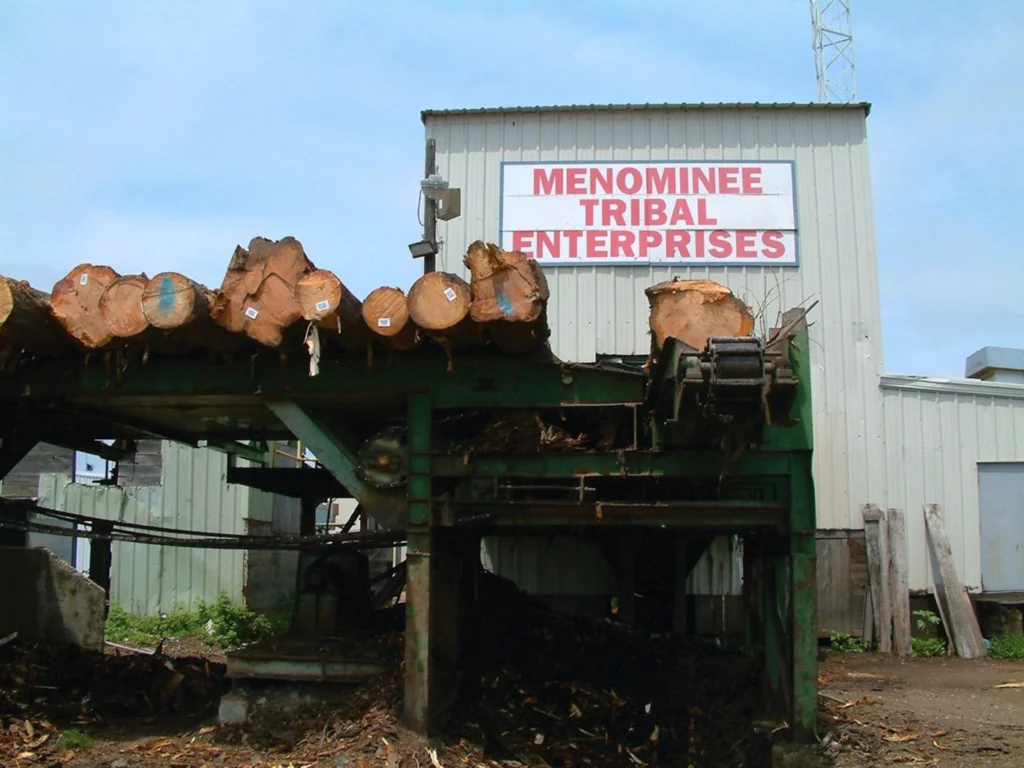
Will the forest continue to thrive? However good the management, there are growing environmental threats. Changing climate is bringing more windstorms, says Lohrengel. The most recent blast, in June 2022, consigned 12 million board-feet—more than a year’s typical harvest—to the forest floor in 20 minutes. The foresters were out the following day flying drones to identify the damaged areas, and for the next nine months abandoned their logging schedules to concentrate on salvaging the downed timber.
Invasive pests can be a menace, too. The emerald ash borer, an Asian insect that has spread to 36 states since its arrival in the U.S. in 2002, finally entered the reservation last fall. “We were the last place in Wisconsin to get it,” says Waukau. He fears the worst. “It’s hard to imagine the ash not being in our forest, but it may be inevitable.” Despite such threats, he believes the large, biodiverse, and sustainably managed forest he oversees is more resilient than most. “Maybe in 30 or 40 years we will have lost some species, but I fully expect the forest will be thriving.”
Back in the forest, Lohrengel points to a clutch of tiny maple saplings reaching up to light streaming through the canopy after recent felling. “They look small now,” he says. “But future generations will be marveling at how big they become.”
This story was originally published in Yale E360 and is reprinted here with permission. Fred Pearce traveled to the Menominee Indian Reservation with the support of the American Hardwood Export Council.
IPM Responds to Gross Violation of Human Rights at Thacker Pass
https://indigenouspeoplesmovement.org/

Today, June 26, is Leonard Peltier Day in Oglala S D. Internationally recognizes as a political prisoner, he has been unjustly incarcerated for 17,307 days. The International Leonard Peltier Defense Committee is asking for:
- A transfer to a medium security prison;
- A congressional investigation into the FBI’s misconduct in Indian Country, against the American Indian Movement and in the case of Leonard Peltier;
- An Executive Review by the Attorney General;
- An award of Executive Clemency
- The release of tens of thousands of related case documents.
|
The Line 5 Pipeline threatens Tribal land, Treaty Rights in the ceded territory, the Great Lakes, and the climate. The pipeline, which is long past its lifespan, is currently pumping tar sands oil …
|
Indigenous leaders urge Biden to shut down Line 5 pipeline due to ‘imminent’ threat

“Heart of the Turtle” international Indigenous gathering in opposition to oil pipelines, Mackinaw City, May 14, 2022 | Laina G. Stebbins
Leaders from the Indigenous Women’s Treaty Alliance submitted a letter Thursday to the Biden administration with an emergency request to decommission the Line 5 pipeline due to imminent threats of oil spills impacting the Bad River Watershed and the Great Lakes.
The controversial 70-year-old pipeline, operated by Canadian oil company Enbridge, flows crude oil from the Bad River Watershed in northern Wisconsin to the Upper Peninsula. From there it flows through the Straits of Mackinac to the Lower Peninsula of Michigan, and then to refineries in Sarnia, Ontario, and Detroit.
“We call on you to immediately revoke the Presidential Permit for Canada’s deteriorating Enbridge Line 5 pipeline before environmental calamity strikes with oil spills into the Great Lakes,” states the letter. “At the Bad River Reservation, recent flooding has eroded one riverbank to within 11 feet or less of Line 5’s centerline, creating an immediate threat. This is a nearly 70-year-old pipeline running almost two decades past its engineered lifespan.”
The letter follows an emergency filing earlier this month by the Bad River Band of the Lake Superior Chippewa in Wisconsin seeking to close the Line 5 pipeline after extensive flooding in the area. However, U.S. District Judge William Conley rejected the request, saying the pipeline did not present an imminent danger.
Enbridge officials took that ruling to bolster their case that Line 5 continues to operate safely across the Bad River Reservation.
“In fact, Line 5 has never had a release on the Reservation,” spokesman Ryan Duffy told the Michigan Advance, while noting “that the judge said moving forward with erosion mitigation projects is critically important and multiple projects are before the Band for approval. The company needs the Band’s approval to move forward, but to date the Band has not approved any of Enbridge’s erosion control measures nor given a time frame for when they may allow this work. We stand ready to work with the Bad River Band on projects that will prevent any future erosion, that will protect the waters of the Bad River and Line 5 pipeline.”
However, the Alliance pointed to a report by the National Wildlife Federation that stated the inland sections of Line 5 have leaked at least 33 times since 1968, discharging more than 1.1 million gallons of oil.
“Independent monitoring shows the underwater section of Line 5, which transitions from a single 30-inch pipeline inland to two 20-inch pipelines in the open waters of the Great Lakes, is no longer safe in the unique and fragile environment of the Straits,” states the federation’s report.
That analysis is alarming for Indigenous leaders like Jannan J. Cornstalk, Citizen of Little Traverse Bay Bands of Odawa Indians, and Director of the Water is Life Festival.
“Our very lifeways and cultures hang in the balance as Line 5 continues to operate illegally in Indigenous territories and water,” she said. “Allowing Line 5 to continue to operate is cultural genocide, and the Biden Administration must listen and shut down Line 5. That water is our relative, and we will do whatever it takes to protect our water, our sacred relative.”
FREE LEONARD PELTIER!
|
Tribes Host Prayer Ceremony Near White House Urging Biden to Reverse Resolution Copper Mine
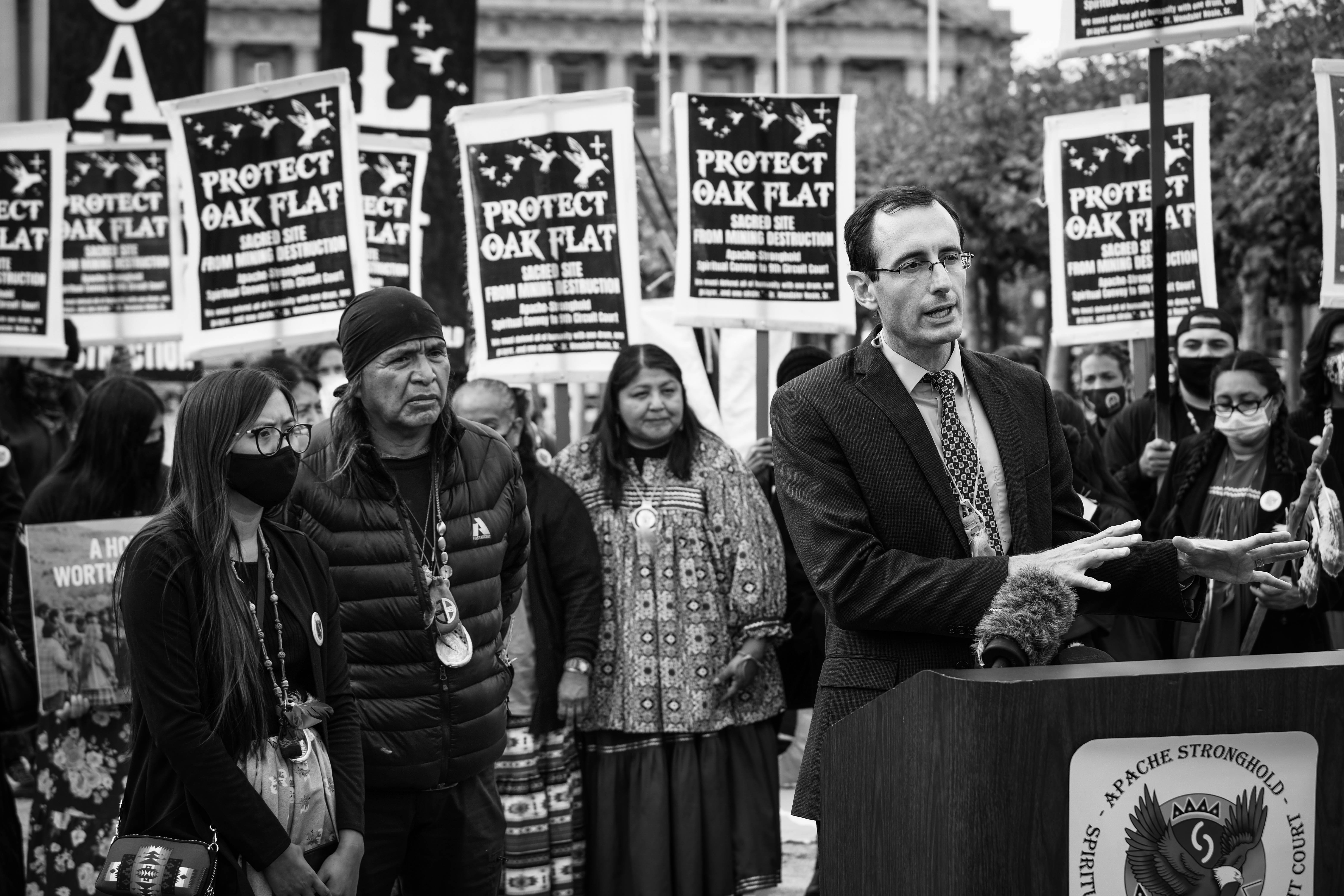
(Photo courtesy of Apache Stronghold and Steve Pavey)
- BY DARREN THOMPSON APRIL 27, 2023
WASHINGTON— Tribal and congressional leaders joined the San Carlos Apache Tribe on Wednesday, April 26, in a prayer ceremony and press conference denouncing Arizona’s Resolution Copper Mine project.
The event, dubbed “Prayer to Save Oak Flat,” was hosted across the street from the White House in Lafayette Square Park.
“The Biden Administration is poised to give sacred Apache land in eastern Arizona to foreign mining companies with close financial ties to the Chinese government to construct an unnecessary copper mine that will destroy Oak Flat,” said San Carlos Apache Tribe Chairman Terry Rambler in a statement. “Destroying Oak Flat would be a major human rights violation. Tribes across the country vehemently oppose this assault on tribal sovereignty and Native American religious freedom.”
Resolution Copper hopes to build a copper mine near a place the Apache and other tribes consider sacred, a ceremonial ground called Chí’chil Biłdagoteel, or “Oak Flat,” in Arizona’s Tonto National Forest. Because the mine is on federal lands, the permitting process is overseen by the U.S. Forest Service. Federal legislation was passed in 2014 that paved the way for a land swap between Resolution Copper and the U.S Forest Service, where Resolution Copper would exchange 5,429 acres of Arizona land it owns in exchange for 2,422 acres of federal land above a massive copper deposit.
The value of the mine is estimated at $64 billion, with 1.787 billion metric tonnes of copper with an average grade of 1.5% copper over the next 60 years. The company says the mine’s life will provide thousands of direct and indirect jobs and will supply nearly 25% of the domestic demand for copper.
In the final days of the Trump Administration, the U.S. Forest Service published the project's final environmental impact statement (FEIS) on January 15, 2021. However, president Biden halted the FEIS on March 1, 2021, saying the project needed more time to consult with Indian Tribes.
“We want the EIS redone because the EIS the Trump Administration rushed to publish didn’t have all the negative impacts the Tribe and other organizations came up with,” San Carlos Apache Chairman Terry Rambler told Native News Online. “It wasn’t fair the way they did.”
Rambler said the tribe and allies drafted a memorandum of understanding they wanted to enter with the USDA to ensure a fair consultation process.
Because the MOU wasn’t signed, Rambler disagrees that consultation was officially done. As a result, The Apache Stronghold — a nonprofit advocacy group led by Rambler — filed a lawsuit on January 21, 2021, against the project.
In the lawsuit, the Apache Stronghold states, “the Apaches view Oak Flat as a ‘direct corridor’ to the Creator’s spirit.” They also argued that the land exchange violates their First Amendment rights and the Religious Freedom Restoration Act, where “government should not substantially burden religious exercise without compelling justification.”
The 9th Circuit Court decided in early 2022 that Resolution Copper could proceed with operations while the lawsuit is pending in court. Last November, the court announced that it would rehear Apache Stronghold v. United States “en banc” in front of a full panel of 11 judges. The court requested the en banc hearing to rehear the case, and is extremely rare, Apache Stronghold’s legal counsel Becket Law told Native News Online last fall. A call to rehear a case happens in less than 0.5 percent of cases the court hears.
Oak Flat is listed on the National Historic Register of Historic Places as a Traditional Cultural Property. It has been protected from mining by Congress for more than 60 years. Last week, leaders at the United Nations Permanent Forum on Indigenous Issues (UNPFII) acknowledged and called the Resolution Copper project a human rights violation and said the project will destroy an entire way of life for the Apache people.
U.S. Rep. Raul Grijalva, D-Ariz., joined Apache leaders with other congressional representatives and Tribal leaders from Oklahoma and North Carolina, and the president of the Inter Tribal Association of Arizona.
Together, they hope President Biden will stop the mine from proceeding.
More Stories Like This
San Carlos Apache take copper mine fight to United NationsNative American Attorney and Activist Tara Houska Honored with $100,000 Rose-Walters Prize for Global Environmental Activism
Yellowstone Bison See Deadliest Season Since 2008
Scramble for clean energy metals confronted by calls to respect Indigenous rights
International week of action to defend El Salvador´s mining ban and demand the release of the five Water Defenders of Santa MartaAs social organizations in El Salvador recently celebrated the sixth anniversary of the historic mining prohibition, approved unanimously by the Legislative Assembly in 2017, there are signs that the government of President Nayib Bukele is creating conditions to overturn the law. Despite the president’s popularity, mostly due to his hard-line approach to gangs and crime, the Salvadoran economy is failing and the government is in desperate need to attract foreign investment. In 2021, Salvadoran environmental organizations denounced that the government had joined the Intergovernmental Forum on Mining, a multilateral NGO that promotes “sustainable” mining, and shortly after, a law was passed to create a Directorate of Energy Mines and Hydrocarbons. Community leaders in Cabañas have also denounced the presence of employees of mining companies offering long-term leases on land located in areas of mining interest. On January 11, Salvadoran police arrested 5 Water Defenders from Santa Marta in Cabañas, including Antonio Pacheco, the director of the Salvadoran Economic and Social Development Association (ADES), who was a key leader in the fight against mining for more than 12 years and had recently been sounding the alarm over Bukele’s attempts to re-open the door to multinational mining companies. Despite the lack of evidence, the Water Defenders were quickly sentenced to six months of pre-trial detention on trumped-up charges related to an alleged crime from nearly 30 years ago. Now, like thousands of other prisoners in El Salvador, they are in grave danger of dying or being killed while awaiting an opportunity to prove their innocence. Their families and legal team are not able to denounce the case publicly because the judge has imposed a rare gag order. These arbitrary arrests are deeply concerning as they violate both El Salvador’s internationally recognized Peace Agreement and the National Reconciliation Law, both signed in 1992. |
|
|
|
|
CALL FOR SUPPORTAs part of the international campaign to defend the historic mining ban, and to call for the immediate release of the Water Defenders, environmental organizations in El Salvador and their International Allies who have historically opposed metallic mining are calling for international days of action to start on (or around) April 22 (Earth Day) and to finish on April 30th. We are asking groups like yours to join Salvadoran social movement organizations in organizing solidarity actions to take place in cities around the world. Together, we can help to raise international awareness of the country’s political crisis and to show urgently needed solidarity with the Salvadoran social movements and the community of Santa Marta. |
|
|
|
|
WHAT CAN YOU DO
|
Opinion: Nevada can’t shed its ugly past while continuing to exploit Native people and lands
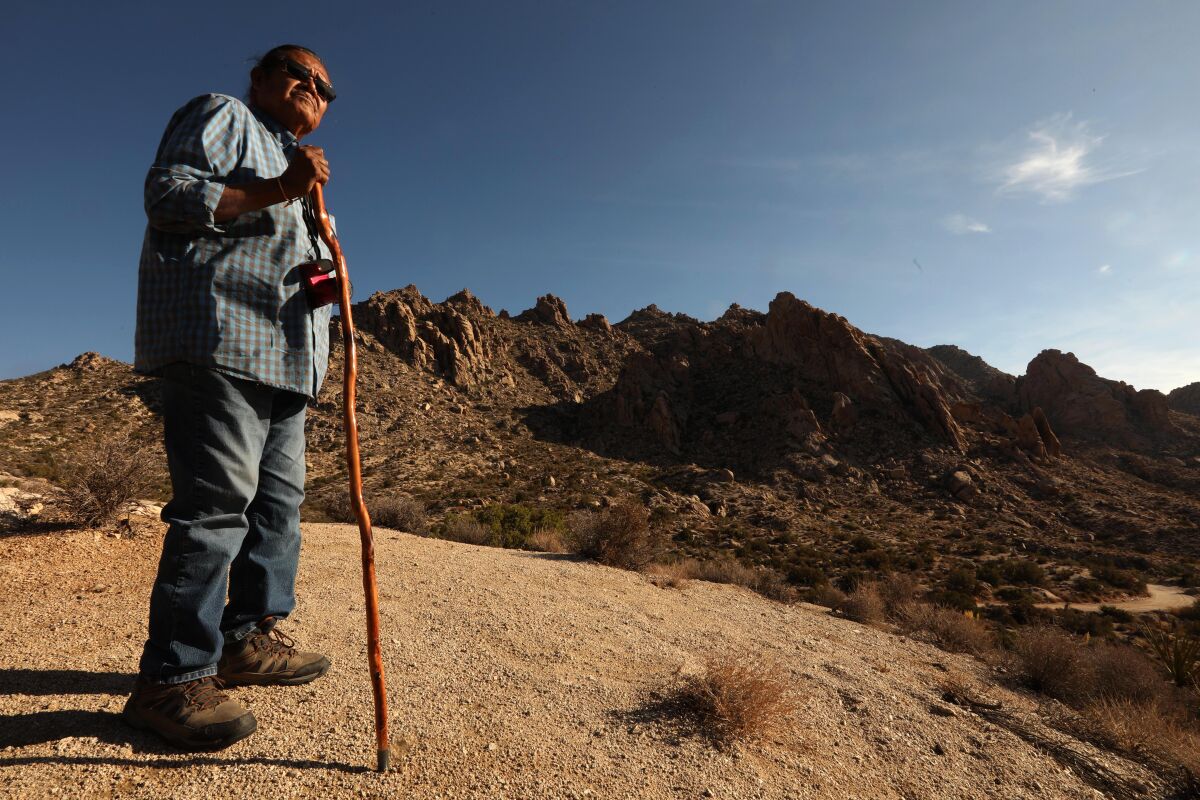
Today, tourists from all over the world flock to Nevada to experience selective amnesia. “What happens in Vegas stays in Vegas,” the slogan goes. But Las Vegas’ culture of forgetting is more than drunken hijinks. The city’s existence depends on forgetting the colonial violence that made the Southwest. Since becoming a state in 1864, Nevada’s basic political and economic infrastructure is a product of the expropriation of Native American lands.
If any one Nevadan represents this history, it’s Patrick “Pat” Anthony McCarran, the Democratic U.S. senator who served the state from 1933 to 1954. McCarran’s name is everywhere in Vegas: on street signs, building names and, until 2021, the Las Vegas International Airport. Many locals remember McCarran for being a champion of the mining and ranching industries; less proudly, they have come to recognize that he was an unabashed antisemite.
For this reason, Clark County commissioners recently rebranded the airport for a different Democratic senator, Harry Reid. Still, in reckoning with McCarran’s legacy, Nevadans sometimes overlook the ways in which even his most laudable successes carried on an ugly tradition of stealing from Indigenous people.
Dispossession began before McCarran’s time, in the 19th century. After Mexico ceded its northern territory to the United States in 1848, decades of violence ensued between white newcomers and Native nations defending their land. In 1863, near what is now the Utah-Nevada border, Western Shoshone leaders signed the Treaty of Ruby Valley for the sake of “peace and friendship.” The treaty acknowledged Native jurisdiction over much of the Intermountain West from Death Valley to Idaho’s Snake River.
Except for limited rights of way, forts and mines, Shoshone delegates neither ceded nor sold any real estate to the federal government. Nevertheless, Nevada became a state the next year, on Oct. 31, 1864. As American settlers began arriving in droves, they treated Newe (Western Shoshone) land — along with that of the nearby Numu (Northern Paiute), Nuwuvi (Southern Paiute) and Washoe nations — as “public domain,” empty for the taking.
McCarran’s father had moved west in 1857 with the California Volunteers, a division of the U.S. Army charged with pacifying Natives along the Sierra Nevada’s eastern slope. After serving, he built a ranch on the lower Truckee River, east of Reno. His son, Pat, was born on Aug. 8, 1876, and grew up on the homestead
Although the younger McCarran was raised to think Native people were vanishing, in reality they were simply adapting to the settler invasion. Some relocated to reservations. Others resettled on the outskirts of mining towns. But most continued to visit traditional territories to gather pine nuts, hunt jackrabbits and perform ceremonies. They also began to mobilize, pursuing treaty rights in the courts as early as the 1920s.
In any event, McCarran inherited his father’s sense of Manifest Destiny. When he entered politics, anti-Indigenous ideas informed his policymaking in ways that continue to shape present-day Nevada. Even as he achieved national influence, serving on the Senate’s powerful Appropriations and Judiciary committees, he pursued parochial goals in his underdeveloped home state. Often his initiatives involved systematically denying Native Nevadans access to resources — particularly water — while redirecting them to his growth-minded constituents.
In one episode, McCarran went out of his way to enable non-Native squatters on the Pyramid Lake Indian Reservation, which he called a matter “of equity and justice toward the white settlers.” Avery Winnemucca, the Pyramid Lake tribal chairman, wrote to Eleanor Roosevelt in 1949, imploring her to lobby Congress against bills McCarran proposed, which would have patented the settlers’ illegal homesteads retroactively. “In defeat our ancestors accepted the white man’s treaties and promises,” Winnemucca reminded the former first lady. “Then why does Sen. McCarran propose the Congress of the U.S. to blow its nose on the American flag?” Although the immediate bills died, non-Native farmers would continue to contest the reservation’s limited water supply for decades after.
McCarran also pursued his vision of aggressive growth by soliciting military installations on the Nevada desert’s vast, “open” public lands. Nellis Air Force Base (originally an airstrip called McCarran Field, north of Las Vegas) and Naval Air Station Fallon near Reno, both established during World War II at McCarran’s urging, today represent two of the largest defense properties in the United States.
His crowning achievement came in 1950, with the creation of America’s first permanent continental nuclear weapons testing site, the Nevada Proving Grounds (later, the Nevada Test Site). Over the next 40 years, the Atomic Energy Commission (later, the Department of Energy) would detonate nearly a thousand fission devices above and below the 1,300-square-mile restricted zone.
The site was in the heart of the territory of the Western Shoshone, which they call Newe Segobia. In the 1980s, citing violations of the Ruby Valley Treaty, Newe land defenders, along with non-Indigenous pacifists and environmentalists, began protesting outside its gates. The coalition of organizers drew thousands of demonstrators to the desert each spring to peacefully gather and pray for an end to colonial occupation.
To this day, much of the region remains a highly restricted — and toxic — military zone. Native downwinders suffer some of the highest rates of cancer in the nation, probably related to radiation exposure from consuming contaminated game and wild plants in traditional diets.
Pat McCarran achieved his vision for the desert: When he died in 1954, Las Vegas was one of the fastest growing cities in the country. Southern Nevada now contains over 2 million people, with a Native population of less than 1%.
Growth continues to be a point of pride for state leaders. Recent development measures include expanding the Naval range’s footprint, doubling down on wasteful settler water laws, and transforming Nevada into a “lithium loop,” an all-in-state critical-mineral supply chain. Despite allowing for more citizen and tribal participation — and an ostensibly “green” goal in lithium-ion battery production — the current development agenda channels McCarran’s extractive goals and disregard for Native land rights.
In some ways, things are getting better. Nevadans are rethinking McCarran’s legacy in public spaces. And last month, after years of advocacy efforts by Indigenous land defenders, the Biden administration established a half-million-acre national monument surrounding Avi Kwa Ame, or Spirit Mountain, in southern Nevada. The designation will, at last, protect land considered sacred by Yuman-speaking people of the lower Colorado River.
But decolonizing Nevada will require a more fundamental reevaluation of basic ideas about development, growth and resource exploitation at the core of the state’s economy. Although the region faces a megadrought, McCarran’s vision still drives much of the state’s policies. Until that changes, Nevada, along with much of the American West, is living on stolen land and borrowed time.
Taylor Rose is a PhD candidate at Yale University. He researches mining, militarization and Native American history in the American West. This article was produced in partnership with Zócalo Public Square.
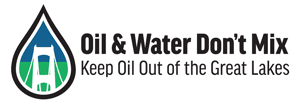
Pamela --
You'll like a beautifully written article in the Sierra Club's magazine, Sierra, because it's helping to elevate the work to shut down the Enbridge crude oil pipeline nationally. A Battle for the Future of the Great Lakes highlights the ongoing battle between those who care about humans and the environment and the Canadian company Enbridge over the future of the Line 5 crude oil pipeline in the Great Lakes.
You know the dangers. The Line 5 pipeline threatens the Great Lakes with a devastating oil spill every day it operates. The article lifts the many voices calling for an immediate shutdown and urges people to call on the Biden administration to shut it down. Several Oil & Water Don't Mix members are featured.
Please join the thousands who have already called President Biden to shut down the pipeline. Not only is it important to take this action, but we made it super easy to take action now.
It is crazy to think that this 70-year-old crude oil pipeline is still operating and threatening the Great Lakes daily. Thanks for staying involved in the work to protect this internationally significant body of water for the good of our economy and life itself.
Bill Latka
Digital Coordinator, OWDM
Oil & Water Don't Mix
Free Leonard Peltier Imprisoned 48 years today, Feb 6, 2023

Sign the petition to Pres Biden
Facts About the Case
- Leonard Peltier is an imprisoned Native American considered by Amnesty International, the Southern Christian Leadership Conference, National Congress of American Indians, the Robert F. Kennedy Memorial Center for Human Rights, Archbishop Desmond Tutu and Rev. Jesse Jackson, among many others, to be a political prisoner who should be immediately released.
- Leonard Peltier was convicted for the deaths of two FBI agents who died during a 1975 shoot-out on the Pine Ridge Indian Reservation. Mr. Peltier has been in prison for over 29 years.
- The Wounded Knee occupation of 1973 marked the beginning of a three-year period of political violence on the Pine Ridge Indian Reservation. The tribal chairman hired vigilantes, self titled as “GOONS,” to rid the reservation of American Indian Movement (AIM) activity and sentiment. More than 60 traditional tribal members and AIM members were murdered and scores more were assaulted. Evidence indicated GOON responsibility in the majority of crimes but despite a large FBI presence, nothing was done to stop the violence. The FBI supplied the GOONS with intelligence on AIM members and looked away as GOONS committed crimes. One former GOON member reported that the FBI supplied him with armor piercing ammunition.
- Leonard Peltier was an AIM leader and was asked by traditional people at Pine Ridge, South Dakota, to support and protect the traditional people being targeted for violence. Mr. Peltier and a small group of young AIM members set up camp on a ranch owned by the traditional Jumping Bull family.
- On June 26, 1975 two FBI agents in unmarked cars followed a pick-up truck onto the Jumping Bull ranch. The families immediately became alarmed and feared an attack. Shots were heard and a shoot-out erupted. More than 150 agents, GOONS, and law enforcement surrounded the ranch.
- When the shoot-out ended the two FBI agents and one Native American lay dead. The agents were injured in the shoot-out and were then shot at close range. The Native American, Joseph Stuntz, was shot in the head by a sniper’s bullet. Mr. Stuntz’s death has never been investigated, nor has anyone ever been charged in connection with his death.
- According to FBI documents, more than 40 Native Americans participated in the gunfight, but only AIM members Bob Robideau, Darrell Butler, and Leonard Peltier were brought to trial.
- Mr. Robideau and Mr. Butler were arrested first and went to trial. A federal jury in Iowa acquitted them on grounds of self-defense, finding that their participation in the shoot-out was justified given the climate of fear that existed on the Pine Ridge Reservation. Further, they could not be tied to the close-range shootings.
- Leonard Peltier was arrested in Canada on February 6, 1976, along with Frank Blackhorse, a.k.a. Frank Deluca. The United States presented the Canadian court with affidavits signed by Myrtle Poor Bear who said she was Mr. Peltier’s girlfriend and allegedly saw him shoot the agents. In fact, Ms. Poor Bear had never met Mr. Peltier and was not present during the shoot-out. Soon after, Ms. Poor Bear recanted her statements and said the FBI threatened her and coerced her into signing the affidavits.
- Mr. Peltier was extradited to the United States where he was tried in 1977. The trial was held in North Dakota before United States District Judge Paul Benson, a conservative jurist appointed to the federal bench by Richard M. Nixon. Key witnesses like Myrtle Poor Bear were not allowed to testify and unlike the Robideau/Butler trial in Iowa, evidence regarding violence on Pine Ridge was severely restricted.
- An FBI agent who had previously testified that the agents followed a pick-up truck onto the scene, a vehicle that could not be tied to Mr. Peltier, changed his account, stating that the agents had followed a red and white van onto the scene, a vehicle which Mr. Peltier drove occasionally.
- Three teenaged Native witnesses testified against Mr. Peltier, they all later admitted that the FBI forced them to testify. Still, not one witness identified Mr. Peltier as the shooter.
- The U.S. Attorney prosecuting the case claimed that the government had provided the defense with all FBI documents concerning the case. To the contrary, more than 140,000 pages had been withheld in their entirety.
- An FBI ballistics expert testified that a casing found near the agents’ bodies matched the gun tied to Mr. Peltier. However, a ballistic test proving that the casing did not come from the gun tied to Mr. Peltier was intentionally concealed.
- The jury, unaware of the aforementioned facts, found Mr. Peltier guilty. Judge Benson, in turn, sentenced Mr. Peltier to two consecutive life terms.
- Following the discovery of new evidence obtained through a Freedom of Information Act lawsuit, Mr. Peltier sought a new trial. The Eighth Circuit ruled, “There is a possibility that the jury would have acquitted Leonard Peltier had the records and data improperly withheld from the defense been available to him in order to better exploit and reinforce the inconsistencies casting strong doubts upon the government's case." Yet, the court denied Mr. Peltier a new trial.
- During oral argument, the government attorney conceded that the government does not know who shot the agents, stating that Mr. Peltier is equally guilty whether he shot the agents at point-blank range, or participated in the shoot-out from a distance. Mr. Peltier’s co-defendants participated in the shoot-out from a distance, but were acquitted.
- Judge Heaney, who authored the decision denying a new trial, has since voiced firm support for Mr. Peltier’s release, stating that the FBI used improper tactics to convict Mr. Peltier, the FBI was equally responsible for the shoot-out, and that Mr. Peltier's release would promote healing with Native Americans.
- Mr. Peltier has served over 29 years in prison and is long overdue for parole. He has received several human rights awards for his good deeds from behind bars which include annual gift drives for the children of Pine Ridge, fund raisers for battered women’s shelters, and donations of his paintings to Native American recovery programs.
- Mr. Peltier suffers from diabetes, high blood pressure, and a heart condition. Time for justice is short.
- Currently, Mr. Peltier’s attorneys have filed a new round of Freedom of Information Act requests with FBI Headquarters and all FBI field offices in an attempt to secure the release of all files relating to Mr. Peltier and the RESMURS investigation. To date, the FBI has engaged in a number of dilatory tactics in order to avoid the processing of these requests.
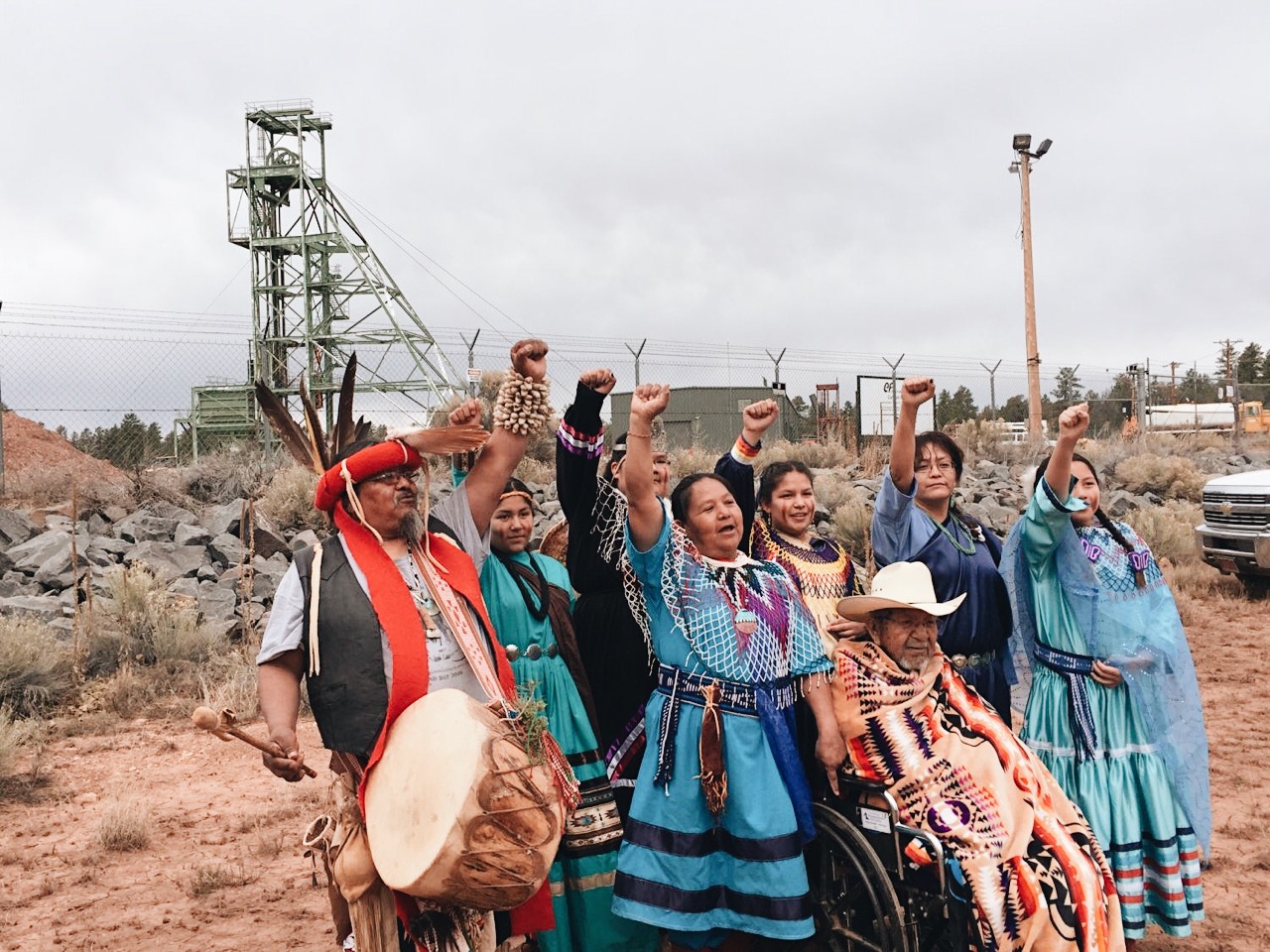
The Lasting Harms of Toxic Exposure in Native American Communities
Berkeley Review
“They never told us uranium was dangerous. We washed our faces in it. We drank in it. We ate in it. It was sweet,” explained Cecilia Joe, an 85-year-old Navajo woman, in a recent interview. Joe’s experience illustrates the under-researched but extremely pervasive problem of environmental injustice on Native American reservations.
Due to decades of harmful environmental policy and exploitation by private companies, Native communities have been disproportionately subjected to toxic waste, pollution and other health risks — leading to what some activists describe as “environmental genocide.” Out of all the ethnic groups in the United States, Native Americans are the most at risk of toxic exposure, a fact that reflects broader realities about the continued oppression of Native communities and has galvanized Native activists into seeking justice.
While the word “reservation” may invoke ideas of protection or sanctuary, historically, Native American reservations have systematically been targeted as sites for toxic waste disposal, and the U.S. government has historically been indifferent towards this. Companies “hoping to take advantage of the devastating chronic unemployment, pervasive poverty, and sovereign status of Indian nations” offer millions of dollars to Native American tribes in exchange for the ability to dispose of toxic waste, according to Bradley Angel in a report for the environmental organization Greenpeace.
Native American reservations have some of the highest poverty rates in the country, and may feel inclined to accept these companies’ financial offers, despite the ensuing environmental degradation and health impacts. For instance, some residents of the Skull Valley Indian Reservation actually support the storage of nuclear waste on their land because of the economic opportunities it will create, while other residents are adamantly opposed to it. As a result, Native Americans are 1.8 times more likely than any other ethnic group to live near toxic waste facilities.
For instance, the Yakama Nation, a tribe located in southwest Washington, is surrounded on three sides by Superfund sites — areas designated by the U.S. government as the most contaminated and polluted locations in the country. Portland Harbor, which the tribe relies on for fish and other resources, has been heavily contaminated by petroleum, pesticides and other toxic chemicals at levels dangerous to human health, forcing the Yakama people to restructure their way of life. Although the Yakama Nation has been advocating for Portland Harbor to be cleaned up for over thirty years, the companies responsible for the contamination have continually delayed and obstructed the cleanup.
Toxic exposure has led to devastating and long-lasting health impacts in Native American communities. Members of the Mohawk Nation at Akwesasne have historically fished in the St. Lawrence River in New York, which has been contaminated by hydraulic fluids leaking from aluminum factories in the area. As a result, the Mohawk people have consistently been found to have elevated levels of polychlorinated biphenyls (PCBs) in their bloodstreams, which has caused them to have a higher risk of diabetes and cancer.
Similarly, the Yupik people of St. Lawrence Island in Alaska have PCB levels in their blood that are 4 -12 times higher than the levels of the general U.S. population, presumably because of hazardous waste from abandoned military sites — leading to increases in cancer rates, birth defects, and miscarriages. In the late 1990s, Yupik environmental activist Annie Alowa asked the U.S. Army Corps of Engineers to clean up the military base on the northeast part of the island, highlighting the impact on her community’s health, but her concerns were dismissed. Alowa, who died of cancer in 1999, claimed that her breast cancer and liver cancer were a direct result of environmental contaminants on the island.
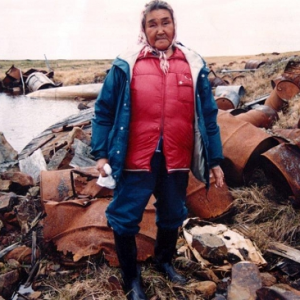
The legacy of environmental racism towards Native Americans is also inseparable from the United States’ history of nuclear development and military innovation. From the 1940s to the 1980s, the Navajo Nation was one of the most plentiful uranium mining sites in the country — the U.S. government extracted over four million tons of uranium ore from sites on the reservation to make nuclear weapons. Navajo people who lived near uranium mines were not warned about the hazards of radiation, and experienced alarmingly high rates of lung cancer, leukemia, kidney disease, birth defects and several other health issues. Mining companies later abandoned these mines without cleaning up the large quantities of uranium on the reservation; even today, the Navajo people continue to suffer adverse health effects related to radiation. The Oglala Lakota people living at the Pine Ridge Indian Reservation in South Dakota, which also has an extensive history of uranium mining, have a cancer mortality rate that is 40 percent higher than that of the overall population.
In the 1960s, the U.S. government tested dioxin, a chemical used in Agent Orange, on the lands of the San Carlos Apache Tribe in Arizona. Exposure to Agent Orange, a powerful chemical herbicide used to control vegetation during the Vietnam War, famously led to catastrophic health complications for Vietnam veterans. Members of the San Carlos Apache Tribe tribe claim that this dioxin experimentation led to similarly devastating illnesses and health complications in their own community, including cancer, heart disease, and neurological disorders.
And at the Dugway Proving Ground, located immediately outside the Skull Valley Indian Reservation, the U.S. government has tested VX, an extremely toxic military-grade poison gas, for decades. In 1968, over 6,000 sheep owned by Skull Valley Goshute Native Americans died after exposure to this nerve agent — yet the military continues to conduct experiments there, despite the obvious health and safety risks to the reservation’s residents.
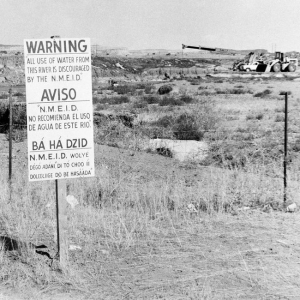
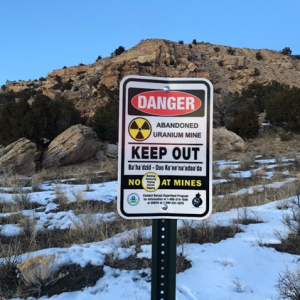
The extent of toxic exposure in Native communities reflects the U.S. government’s tendency to view Native American reservations, and by extension, Native American people, as expendable. Since this country’s inception, Native American policy in the United States has largely been characterized by violence, abandonment, and disinvestment — it comes as no surprise that the government (with the support of private companies) values profit and resources over the health and well-being of the people it has oppressed for centuries. Although toxic waste exposure might not seem like an intentional or malicious attempt to harm Native American communities, the systematic exploitation of Native land and the lack of attention given to the ensuing health effects represents this country’s callous disregard for some of its most vulnerable citizens.
Despite the seemingly irreparable harm that has already been committed, some Native activists still see potential paths to achieving environmental justice. The recent confirmation of Deb Haaland — the first-ever Native American Cabinet Secretary — as the Secretary of the Interior signals the willingness of the Biden Administration to address issues affecting Native communities, including toxic exposure. While the Interior department has historically been used as a tool of oppression towards Native Americans, Haaland has displayed a strong commitment towards advancing environmental justice and prioritizing Native voices.
Native Americans affected by toxic exposure have also frequently turned to the courts to seek compensation for the harm that they have experienced. The Navajo Nation, for example, obtained a settlement of $600 million from two nuclear companies to clean up abandoned uranium mines. Similarly, the Yakama Nation filed a lawsuit against several polluting companies and government entities, including ExxonMobil and the City of Portland, seeking reimbursement for the hundreds of thousands of dollars it will cost to clean up the Portland Harbor.
In 1997, thousands of Native American individuals living near the Hanford Nuclear Facility in Washington filed a class action lawsuit against the U.S. government for “infliction of radiological injuries,” seeking damages for the health issues caused by the facility’s radiation. While this case was set to be heard by a jury, the jury trial was cancelled in 2013, with plaintiffs receiving undisclosed monetary settlements from the Hanford contractors after nearly twenty years of negotiations. Although no amount of money can necessarily compensate for the trauma inflicted by environmental injustice, litigation can potentially help achieve access to justice for Native communities harmed by pollution and contamination.
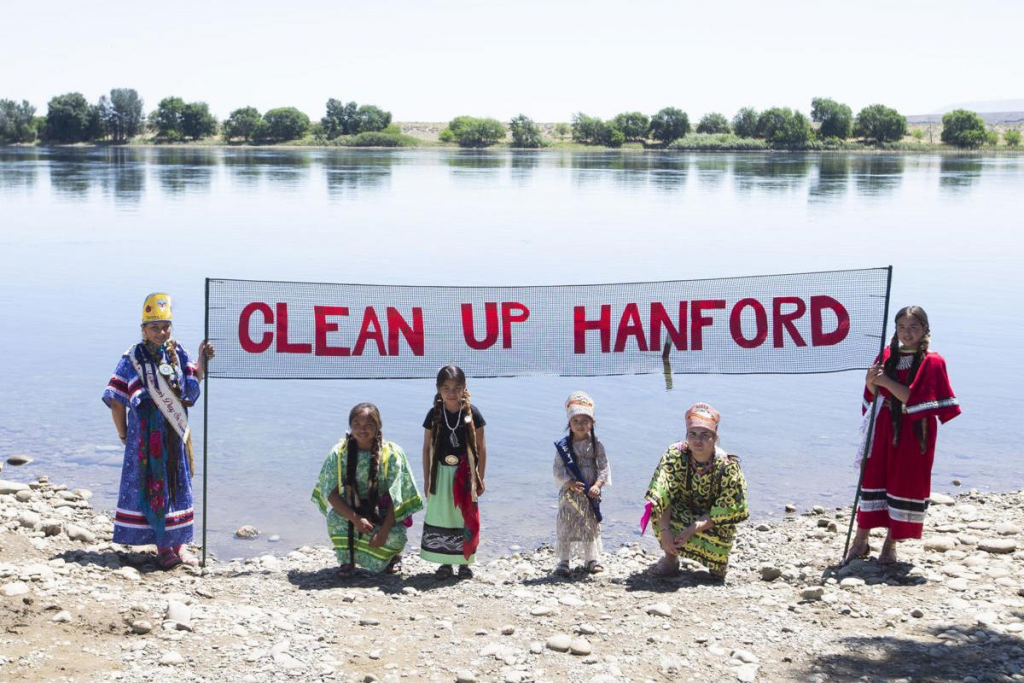
Native American activists have been outspoken in their opposition to environmental injustice for decades — while some might be inclined to view Native communities as passive or complacent in the face of toxic exposure, Native environmental activism has been defined by outrage and organized resistance. Several Native American-led environmental organizations, including the Indigenous Environmental Network, the Native American Environmental Protection Coalition and the American Lands Alliance have been raising awareness about toxic exposure and environmental injustice against Native Americans for decades.
For instance, in the late 1980s, Navajo activists formed a group called Diné Citizens Against Ruining our Environment (CARE), which successfully fought the construction of a proposed toxic waste facility on Navajo land in Arizona. In the early 2000s, the Western Shoshone tribe in Nevada put up an impassioned, years-long fight against a nuclear waste storage facility at Yucca Mountain — the protesters were eventually successful as the project was defunded by the Obama Administration in 2010. And in the mid-2010s, Sioux activists at the Standing Rock Indian Reservation drew national attention to their efforts organizing against the Dakota Access Pipeline, though this protest was ultimately unsuccessful in stopping the pipeline.
Policy solutions that might help address the toxic waste crisis on Native American reservations include banning toxic waste dumping on reservations and passing legislation that prohibits polluting entities, such as nuclear facilities or hazardous waste incinerators, from being near reservations. The U.S. government should also economically invest in Native American communities so that reservations are not financially pressured to accept money from corporations who want to dispose of waste. The Indian Health Service, a division of the Department of Health and Human Services that is responsible for providing federal health services to Native Americans, can establish an office or task force dedicated to preventing health problems that arise from environmental injustice. Lastly, providing monetary reparations to survivors of toxic exposure can help mitigate the lasting harm caused by environmental injustice, especially since the government’s approach has historically been to ignore and neglect these problems.
Addressing the harm inflicted by toxic exposure on Native American reservations will require sustained and equitable policy approaches that prioritize the interests of individuals over the interests of corporations. Above all else, the diseases and deaths caused by exposure to toxic chemicals on Native land serve as a stark reminder of the injustice that has been inflicted on Native Americans by the government and private companies for centuries.
Featured Image Source: Grand Canyon Trust
Floyd Westerman song-
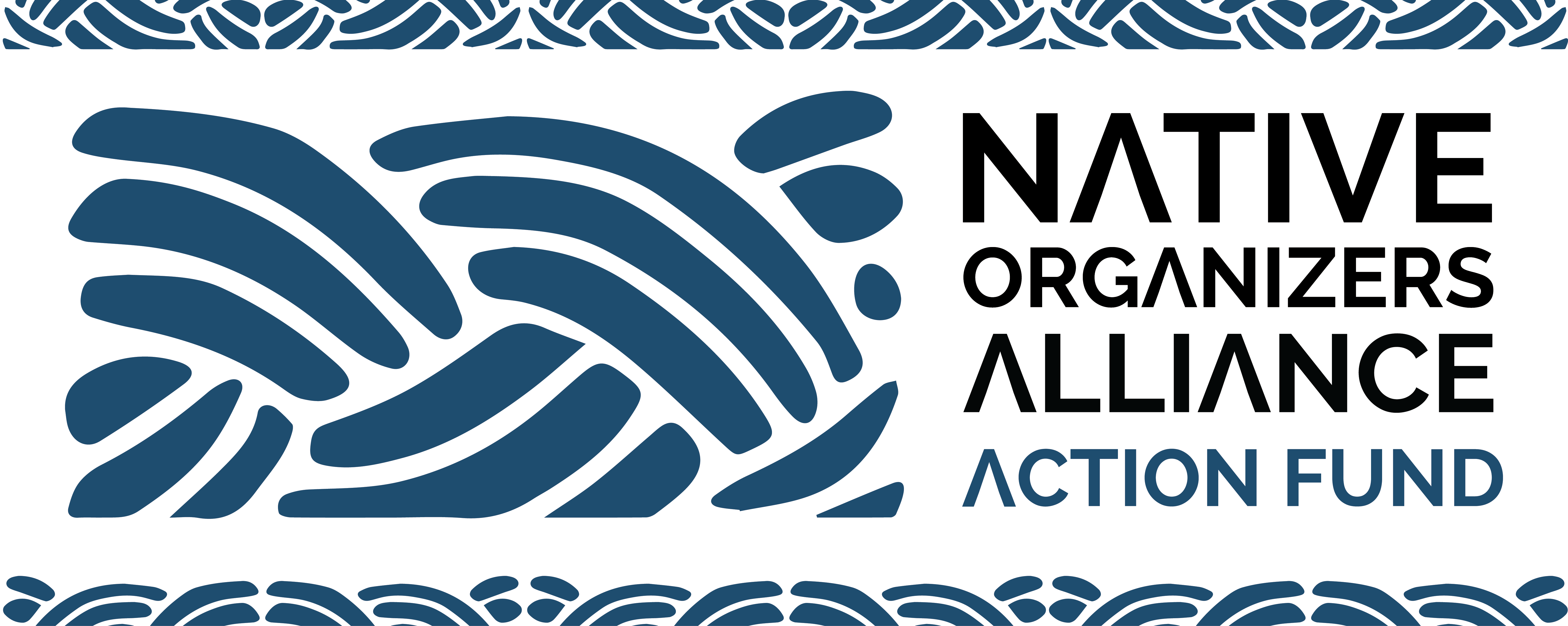
Last week, hundreds of Tribal leaders gathered at the first in-person White House Tribal Nations Summit since 2016. President Biden and his administration’s leaders announced new steps for federal agency consultation with Tribes, as part of a commitment to honor Tribal sovereignty. These are steps in the right direction. Ultimately, tribal consultation must be codified into law. We support the RESPECT Act, which would require federal agencies to consult with Tribal governments before taking action or permitting projects that would significantly impact Tribes. And we need even more when it comes to harmful development and extraction projects like mines, dams, and oil pipelines. Native communities have the inherent and legal right to give or to withhold consent to these projects. The failure of federal agencies to gain the free, prior, and informed consent of Tribes is a violation of treaty rights and a flawed process that leads to the desecration of our sacred places. SIGN NOWHawwih (thank you in Caddo), Judith Le Blanc (Caddo) |
Rights of Nature, by Anahkwet Reiter of the Menominee Nation.
Center for Environmental Rights
Menikanaehkem - Community Rebuilders
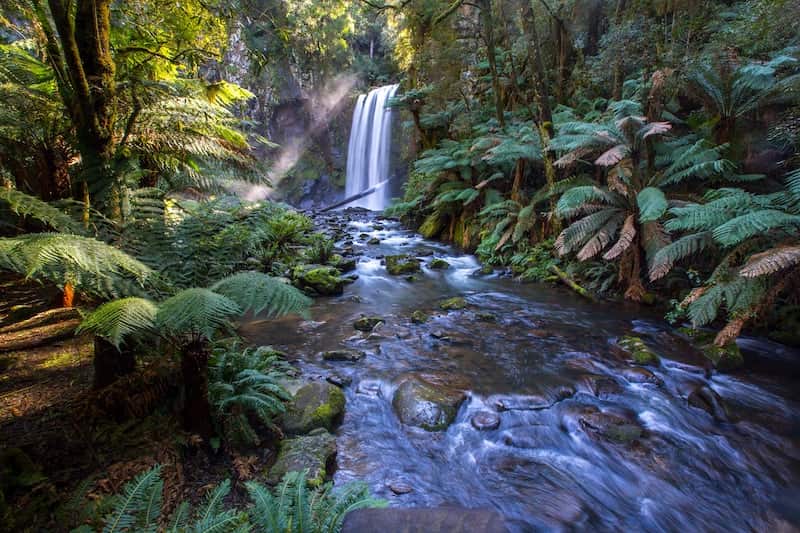

Rights of Nature Slide Show
Water is Life | Indigenous Lifeways Threatened by Enbridge’s Line 5




Michigan U.P. legislators want to erase Menominee Nation historyUPDATED: Michigan Board votes to add ancient Menominee site to National Register of Historic Places; pro-mining Michigan legislators oppose voteBy Michele Bourdieu, with information from Earth Justice*
|
U.S. Policy in the Global South
September 19, 7pm | Zoom
Nobel Peace Laureate Dr. Rigoberta Menchú Tum, Vincent Bevins, and Amy Goodman (moderator)
This video is in English and Spanish with English subtitles. Click here to view it entirely in English or entirely in Spanish.

https://www.facebook.com/LeonardPeltierWalkToJustice
National Walk to Free Leonard Peltier Kicks Off in Minneapolis
The “Walk to Justice: Free Leonard Peltier” will travel from Minneapolis through Wisconsin, Illinois, Indiana, Ohio, and Pennsylvania, ending in Washington, D.C. on November 14. (photo by Darren Thomspon for Native News Online)
- BY DARREN THOMPSON- SEPTEMBER 01, 2022
MINNEAPOLIS—The American Indian Movement (AIM) Grand Governing Council hosted a rally yesterday in Cedar Field Park to kick off a 15-week national walk demanding the release of Leonard Peltier.
The “Walk to Justice: Free Leonard Peltier” will travel from Minneapolis through Wisconsin, Illinois, Indiana, Ohio, and Pennsylvania, ending in Washington, D.C. on November 14.
“This is not an easy thing to plan a national walk,” Rachel Thunder, lead walk organizer and director of AIM’s True People of Indiana and Kentucky Chapter, said during the rally. “This walk wouldn’t be possible without all of our communities coming together along the way. Our brothers and sisters are going to suffer at this ceremony, just as Leonard has suffered for our people.”
Peltier, a member of the Turtle Mountain Band of Chippewa Indians, was convicted of aiding and abetting in the murder of two Federal Bureau of Investigation (FBI) agents on the Pine Ridge Indian Reservation in June 1975. His co-defendants, Dino Butler and Robert Robideau, were charged with two counts of murder and were acquitted under claims of self-defense.
The charge of aiding and abetting allows a court to convict someone guilty of a crime even if they are not the principal offender.
“Who could he have aided and abetted?” Lisa Bellanger, co-director of AIM’s Grand Convening Council, asked yesterday’s crowd. “We asked the federal government to release our elder and to release him now. And we told them that if it doesn’t happen, we’ll lift the spirit of the people, and we’ll walk to D.C.”
Many organizations have advocated for the release of Peltier and consider him America’s political prisoner. The federal appellate judge who oversaw Peltier’s appeal case, Gerald Heaney, later wrote a letter to former Chair on Senate Select Committee on Indian Affairs Daniel Inouye in 1991 stating that the FBI conducted an improper investigation in securing Peltier’s extradition from Canada.
“Although our Court decided that these actions were not grounds for reversal, they are, in my view, factors that merit consideration in any petition for leniency filed,” Heaney wrote in 1991.
Peltier has been in prison for 46 years.
“The first time I’ve seen my dad was when I was two years old,” Peltier’s daughter, Kathy Peltier, said at yesterday’s rally.
Kathy was born in November 1975, months after the Pine Ridge Indian Reservation shootout in June of that year that led to Peltier’s conviction.
“I’ve been speaking about my dad since I could speak, and we know in our hearts that our dad is free,” Kathy said.
“The day of the shootout in 1975, the FBI created a narrative that some super soldier killed two FBI agents,” Dr. Nick Estes said during the rally. “But they don’t tell you that the vast majority of people at that shootout were under the age of 18.”
Musicians Mitch Walking Elk and Robby Romero closed the evening with performances and stories on their lifetime advocating for the release of Leonard Peltier. In 1992, both musicians performed at the United States Federal Penitentiary in Leavenworth, Kansas.
For more information on the walk, please follow the “Walk to Justice: Free Leonard Peltier” Facebook page. Rallies and events will be hosted along the walk, with a convening in Washington, D.C. on November 14, 2022.
Wisconsin Tribes and environmentalists say Wisconsin failed to fully review Enbridge Line 5 oil pipeline project's risks.
The pipeline spans 645 miles from Superior across northern Wisconsin and Michigan before ending in Sarnia, Ontario. It carries up to 23 million gallons of Canadian crude oil and natural gas liquids each day.
Bad River Tribe Files Federal Lawsuit Against Enbridge, the northern Wisconsin Tribe Wants Enbridge To Remove Line 5 from it's Reservation Lands.
The tribe's legal challenge, first mounted in 2019, is now entering its fourth year as Enbridge seeks state and federal permits to build a new 30-inch pipeline that would run roughly41 miles around the tribe's reservation. For tribal officials and activists, the tour of the pipeline’s route presented an opportunity to see the potential risks of the project firsthand. Naomi Tillison, the tribe's director of the Mashkiiziibii Natural Resources Department, said the tribal council previously rejected renewal of pipeline easements due to the threat of an oil spill.
The Wisconsin Department of Natural Resources is the lead state agency permitting the $450 million project. In December, it released a draft environmental review of the company’s plan that critics blasted as incomplete and flawed. Now, the U.S. Environmental Protection Agency says the state's review failed to fully analyze the ways in which the project could harm the environment, as well as tribal resources and treaty rights.
This is the public's opportunity to voice our opposition to Line 5, or a replacement pipeline, being permitted in Wisconsin.
Line 5 Tunnel Project in the Straits of Mackinac
DEPT OF ARMY, DETROIT DISTRICT, CORPS OF ENGINEERS
Published August 15, 2022 / Expiration date: October 14, 2022
Notice of Intent to Prepare an EIS published in the Federal Register for the proposed Enbridge Line 5 Tunnel Project in the Straits of Mackinac, Emmet and Mackinac Counties, Michigan
Subject: This Public Notice announces the U.S. Army Corps of Engineers, Detroit District’s (Corps) Notice of Intent (NOI) to prepare a Draft Environmental Impact Statement (EIS) and to seek input under Section 106 of the National Historic Preservation Act (Section 106) for the proposed Enbridge Line 5 Tunnel Project in the Straits of Mackinac, Emmet and Mackinac Counties, Michigan. The NOI, along with additional information on the project, is available at the following website: https://www.Line5TunnelEIS.com.
The Corps invites all interested parties to provide comments on the identification of and potential effects to historic properties during the EIS scoping period. Visit the project website at https://www.Line5TunnelEIS.com to view the NOI, submit comments, or for information on the proposed project and the Corps’ scoping process.
A paper copy of the NOI may be requested by phone at 313-887-1757 or by mail to: Line 5 Tunnel EIS, 16501 Shady Grove Road, P.O. Box 10178, Gaithersburg, MD 20898. Scoping comments may also be submitted by mail to this address.
Public Scoping Meeting Dates Announced for the Enbridge Line 5 Tunnel EIS
- October 6, 1:00-4:00 PM Eastern (Virtual): https://us06web.zoom.us/j/82961743672 or by phone 309-205-3325 using Webinar ID: 829 6174 3672
Kayanlaˀ Kówa – Great Law of Peace
The Peace Maker & Hiawatha
At one time the Haudenoshaunee people were in mixed emotions with one another. During this time a lot of the people started to feud with each other violently. It was getting so bad that the Creator started to notice and he felt that he needed to send the people a message of what their duties are when they are on Mother Earth. He sent his message through a man named Two Rows of Teeth, otherwise known as the Peacemaker. The Peacemaker received the Creators message in a dream. The Creator told him to spread this word of peace to the Haudenosaunee people.
The Peacemaker decided to start in the East and head west. He met another man named Hiawatha. Hiawatha was a Seneca man who was married into the Mohawk people. When the Peacemaker met with Hiawatha, Hiawatha was mourning the loss of his family. In the matter of three years he lost his wife and three daughters. He was very heart sick and sad.The Peacemaker told him the message he received from the Creator. Hiawatha accepted this message and offered to help the Peacemaker spread the message to the Haudenosaunee people. They went on their way and took the message to the people in the Mohawk village. The Mohawks were hesitant in taking the message but they agreed. The Peacemaker and Hiawatha then went to the Oneida village and they too accepted the message. The they went to the Onondaga people who challenged the Peacemaker and Hiawatha by saying that if they could convince the wicked man, Tadadaho, who was a sorcerer, then they would believe. The two men tried and tried but could not succeed. They left the Onondagas and moved on to the Cayuga village. The Cayuga people accepted the message. Then the Peacemaker and Hiawatha went to the Seneca village, and they too accepted the message.The two men then went back to convince the Onondaga people of the message. They said only if they could convince Tadadaho. The two took on the challenge again and they tried to get him to listen to the message. Every time they would get close, something evil would happen. When they asked people to try and help them, Tadadaho would use his evil powers to hurt or even kill the men who tried to help. As the Peacemaker and Hiawatha tried their hardest they finally got to him, but by this point Tadadaho’s powers were so strong that they were all around the two men. They gave him the message and Tadadaho challenged it with his evil magic, but to no avail. The two men then helped Tadadaho by clearing his mind and helping him see straight. After they helped Tadadaho, the rest of the Onondaga people accepted the Great Law of Peace.
Government of the 5 Nations & Iroquois Confederacy
Our government consists of 50 chiefs from the entire Iroquois confederacy. The Clan Mothers, Chiefs, and Faithkeepers run the Iroquois confederacy. Each person has a specific responsibility for the people. The Iroquois confederacy had an influence on how our country is run today. In 1754, Benjamin Franklin and Thomas Jefferson has gone to visit the chiefs. At the time they were creating the Articles of Confederation for the 13 colonies because they were not states yet. An excerpt from a longer piece written by Benjamin Franklin about 1784. Franklin clearly does not regard Native Americans as “savages”: he is using the term for ironic effect. The “savages” are, in fact, as civilized or more civilized than the Whites: it is the Whites who must rely upon force, punishment, and prisons to enforce good behavior”. Benjamin Franklin and Thomas Jefferson were amazed at how disciplined and organized our government was. They observed very closely and then created what today is the United States Constitution.
Tuscarora join and we become the 6 Nations
In 1716, the Tuscarora people were and the end of a bloody and tragic civil war with the Cherokee and Choctaw people. The Tuscarora people fled north to Iroquois territory and asked for help. They were then taken in under the wing of the Oneida people. The Tuscarora were later adopted in 1722 and made up the sixth nation to the Iroquois Confederacy.
The Original Story of Wampum and the Wampum Belts
Wampum comes from Quahog clamshells found at the bottom of lakes and rivers. Many people think that the Haudenosaunee used wampum as money. That was not true. Wampum was used as a history tool containing a binding story of either a treaty, or a significant agreement or a law for the people. It was also used as a marker for dates and held the Haudenosaunee history. The wampum is made into beads and then strung together to create a belt. Each belt tells a story of the Haudenoshaunee people.
Hiawatha brought wampum to the Haudenosaunee. He needed something that the people knew was pure and held truth within itself. The Hiawatha received the wampum from the Creator when he came to a lake and had no way of crossing it. The lake was covered with ducks. When he came to the lake he asked the Creator to show him how to get across the lake. As soon as he asked all the ducks started to flap their wings and it cleared a pathway. The pathway was made up of the Quahog clamshells. Hiawatha had seen all different shades of purple and the whitest white he had ever seen. So he took some of the clamshells and made them into beads. The ducks cleared a path and also gave Hiawatha the gift of wampum. Today the stories that are associated with the wampum belts are still being told as a reminder that these belts are still a law, treaty, or a space in Haudensaunee history.
Sign up for a free First Nations Wisconsin newsletter
The state is home to 12 tribal nations and the newsletter is named for these 12 tribes, which are Menominee, Oneida, Ho-Chunk, Potawatomi, Mohican, Brothertown and the six Ojibwe nations of Lac du Flambeau, Lac Courte Oreilles, Bad River, Red Cliff, Sokaogon and St. Croix.
The First Nations Wisconsin newsletter is emailed every Wednesday and will feature the most recent tribal news and highlight other issues affecting Indigenous nations and people.
https://www.greenbaypressgazette.com/story/news/native-american-issues/2021/07/07/wisconsin-native-american-issues-sign-up-first-nations-newsletter/7827711002/
Treaty People Convergence
Aug. 5 - 7, 2022
We are all “Treaty People.” Enbridge Pipelines are in violation of our treaties.

For questions or concerns, please call Timothy at 608-630-3633.
Environmentalists say Wisconsin failed to fully review Enbridge Line 5 oil pipeline project's risks. The EPA agrees.
- Monday, July 25, 2022, 5:50am
With the sun blazing overhead, tribal and environmental advocates gathered one June morning along a gravel road where a Canadian energy firm’s pipeline crosses a northern Wisconsin tribe’s reservation.
The site is part of a 12-mile stretch where the Bad River Band of Lake Superior Chippewa has been embroiled in a yearslong legal battle with Enbridge Inc., to remove Line 5 from tribal lands. The pipeline spans 645 miles from Superior across northern Wisconsin and Michigan before ending in Sarnia, Ontario. It carries up to 23 million gallons of Canadian crude oil and natural gas liquids each day.
The tribe's legal challenge, first mounted in 2019, is now entering its fourth year as Enbridge seeks state and federal permits to build a new 30-inch pipeline that would run roughly 41 miles around the tribe's reservation. For tribal officials and activists, the tour of the pipeline’s route presented an opportunity to see the potential risks of the project firsthand.
Naomi Tillison, the tribe's director of the Mashkiiziibii Natural Resources Department, said the tribal council previously rejected renewal of pipeline easements due to the threat of an oil spill.
"That's why the council said we are not going to do these," Tillison said. "We need to protect our water. We need to protect our wild rice beds. We need to protect our fisheries."

The Bad River flowing through Copper Falls State Park. The U.S. EPA said Enbridge's proposed Line 5 project may have "substantial and unacceptable" impacts to the Bad River and Kakagon Sloughs. Danielle Kaeding/WPR
The Wisconsin Department of Natural Resources is the lead state agency permitting the $450 million project. In December, it released a draft environmental review of the company’s plan that critics blasted as incomplete and flawed.
Now, the U.S. Environmental Protection Agency says the state's review failed to fully analyze the ways in which the project could harm the environment, as well as tribal resources and treaty rights.
"We think that many of the comments we've provided to take climate change into account, and to do a much more thorough review of the potential impact on tributaries and on those wetlands, will assist in a better review," EPA’s Regional Administrator Debra Shore told Wisconsin Public Radio's "The Morning Show."
In March, the EPA sent a 31-page letter with nearly 200 recommendations for the DNR to strengthen its review as part of preparing a final environmental impact statement. Federal regulators say the state failed to fully analyze the risk of spills, tribal resources and treaty rights, the effects of climate change, and whether the project would violate state and tribal water quality standards.
The EPA has shared authority with the U.S. Army Corps of Engineers to ensure those who apply for permits meet requirements under the Clean Water Act. The federal agency has invoked its authority to request that Enbridge's application receives a higher level of review, and the EPA has been meeting with the Army Corps and DNR to ensure the agency's concerns are addressed.
Federal regulators want DNR to show project wouldn't violate water quality, treaty rights
The EPA doesn't normally weigh in on state reviews, according to Jen Tyler, a supervisor who oversees federal environmental law within EPA’s Tribal Programs Office in Chicago. Tyler said the DNR invited the federal agency to weigh in on its draft.
"EPA continues to have concerns about potential significant impacts, particularly to waters that are essential to the exercise of tribal treaty rights and continuation of tribal traditional lifeways," Tyler said.
EPA staff told the DNR and U.S. Army Corps of Engineers in letters this spring that the proposed project may have "substantial and unacceptable" impacts on the Bad River and Kakagon-Bad River Sloughs, which they say hold national and international importance.
The EPA’s concerns about the project’s effects on high-quality waters and wetlands validate doubts expressed by tribal and environmental advocates, who argue the proposed route can’t be built without significant environmental harm.
At Copper Falls State Park, the Tyler Forks River cascades down to join the Bad River. At a perch overlooking the falls, Tillison said the Bad River is one of few sites on Lake Superior that support spawning for lake sturgeon. And the Kakagon-Bad River Sloughs represents around 16,000 acres of internationally recognized wetlands. Federal officials say the sloughs are home to the largest wild rice bed on the Great Lakes.
The EPA wants the DNR to provide an analysis showing Enbridge's plans wouldn’t negatively affect state and tribal water quality standards. An Enbridge spokesperson said in a statement that input from agencies and the public will only make the project better.
"Enbridge is committed to protecting the environment — and has proposed a 41-mile reroute, chosen because it minimizes environmental impacts and protects critical resources," said Michael Barnes, an Enbridge spokesperson. "Less than one-tenth of an acre of wetlands will be permanently impacted by the project."
The EPA finds that impact is closer to 34 acres of mostly forested wetlands that would be permanently changed into emergent wetlands.
The EPA has also asked the state to further address how the project may affect tribal treaty rights to hunt, fish and gather along the route.

The Bad River tribe is suing Enbridge to remove the Canadian firm's Line 5 oil and gas pipeline from its reservation.
Danielle Kaeding/WPR
Under that law, the Great Lakes Indian Fish and Wildlife Commission estimates the project would eliminate tribal access to roughly 43 acres of Iron County Forest.
"For folks who just don't have a lot of resources, it is not in the best interest of tribes to diminish any sort of access," said Dawn White, a treaty resources specialist with the Commission who is also a Lac Courte Oreilles tribal member. "It would just be a big disservice for that alone."
Enbridge has said the company will not bar tribal members from lawfully exercising treaty rights where the route crosses public land. However, the company said access to the route’s right-of-way will be restricted during pipeline construction to ensure public safety. The EPA wants the state to clarify where Enbridge would limit access during construction and operations.
The risks of the project to groundwater is another concern. The pipeline also runs within 120 feet of at least 53 private wells. Iron County resident Bobbi Rongstad, who lives 40 acres from the proposed route, said she fears her well may be affected by drilling to install the pipeline during construction.
"If they hit one of those underground aquifers, that water can come spurting up at the surface," Rongstad said. "Then that aquifer might not be under pressure anymore, or the people who have their wells in that aquifer might not get water anymore."

Enbridge replaced its 1960s-era Line 3 pipeline across northern Minnesota amid multiple protests in the region. Photo courtesy of Enbridge
In a flood-prone region, pipeline could carry additional risks
In the past decade, northern Wisconsin has witnessed three floods that are only supposed to occur once every 500 to 1,000 years.
Scientists have found climate change is increasing the frequency and intensity of rains, and environmental advocates say the state’s draft failed to fully account for those changing conditions.
Evidence of the devastation could still be seen in the Bad River watershed as tribal and environmental advocates trekked through tall grass into a wooded ravine along the pipeline route. Joan Elias points out railroad tracks dangling in the air as Edwards Creek trickles along under them.
"It was washed out in both directions on Highway 169. It was washed out along little Edwards Road. It was washed out here," said Elias, noting it took months to repair some roads.
The region's red clay soils don't quickly absorb water, causing rains to rapidly run off and scour the landscape. Opponents say more frequent, intense storms only increase the threat of a spill along the pipeline.
"It's more likely to happen when there's going to be a storm and just more kinetic energy carrying a spill further downstream," said Tony Wilkin Gibart, executive director of Midwest Environmental Advocates.

Naomi Tillison, the Bad River tribe's natural resources director, explains why tribal leaders decided to pursue action to remove Enbridge's Line 5 oil and gas pipeline from the tribe's reservation on Friday, June 24, 2022. Danielle Kaeding/WPR
Enbridge has said it will adhere to the best environmental practices, noting the company will utilize erosion control and spill prevention measures outlined in its environmental protection plan. While that plan includes detailed steps to address erosion and spills, it doesn’t reference climate change.
The EPA is recommending the DNR strengthen its review of the effects that climate change may have on the project, and how climate change affects the risk of erosion and exposure to the pipeline. Federal regulators also want the state to quantify direct and indirect greenhouse gas emissions for all routes proposed by Enbridge, including upstream and downstream emissions from oil and natural gas production to burning fossil fuels.
Next steps for agencies permitting the project
The EPA doesn't have a lead role permitting the project. Even so, the agency is coordinating with the DNR and Army Corps, which is the federal agency permitting the project under the Clean Water Act.
The Army Corps is regulating construction-related activities in federal waters, as well as Enbridge’s proposal to drill underneath the White River.
The Corps' Regulatory Division Deputy Chief Rebecca Graser said they’ve been working closely with the EPA to ensure that the agency is collecting information to address potential concerns.
"Our goal is to make sure that the concerns that are addressed are resolved, whether it's under our authority, or whether it's under the state's authority," Graser said.
The EPA's Tyler expects many of the agency’s recommendations will be addressed in the DNR’s final environmental impact statement, which federal regulators will review. The DNR said they’re addressing issues with those agencies, as well as other interested parties and Enbridge.

A group of tribal and environmental advocates tour Enbridge's proposed route for its Line 5 project, routing a new 30-inch pipeline around the Bad River reservation. The group gathers where the pipeline would cross the Tyler Forks River on Friday, June 24, 2022. Danielle Kaeding/WPR
Ben Callan, who oversees a DNR team that reviews utility and energy projects, said the agency has received more than 30,000 comments on the company’s proposed route. That’s the most he’s seen in nearly two decades managing utility and energy projects.
Meanwhile, Enbridge touted the economic benefits the project will have on the state and region. The company announced in April that Michels Pipeline, Inc. signed a letter of intent to be the main contractor for the project. The company is owned by Michels Corporation. Tim Michels announced his candidacy as a Republican running for governor against Gov. Tony Evers in April.
"The project will be built by a Wisconsin contractor and a trained union workforce — creating 700 family-supporting union construction jobs," said Barnes. "An estimated $46 million will be spent specifically with Native-owned businesses and communities."
A University of Wisconsin economics professor estimated an annual loss of more than 6,000 jobs and roughly $5 billion in lost economic output due to reduced production or closure of refineries in the Upper Midwest. Experts for the tribe dispute those findings.
The Canadian firm stresses the 69-year-old pipeline is safe and a vital energy link for the region. Business Manager Joel Zielke with the Local 601 Steamfitters Union agrees.
"That's a lot of gas and diesel and propane for people that really rely on that at this point still," said Zielke. "We know, someday, we will be able to disconnect ourselves from that, but we're not quite ready yet."
Enbridge plans to break ground once all permits are granted. But it's clear federal regulators want to know much more before they make any final decisions.
Lakota Law Project
Yazzie to UN: Nuclear war doesn't start with detonation of bomb
Support the Establishment of a Truth and Healing Commission on Indian Boarding Schools
Bimaadiziwin Nibi - Water is Life
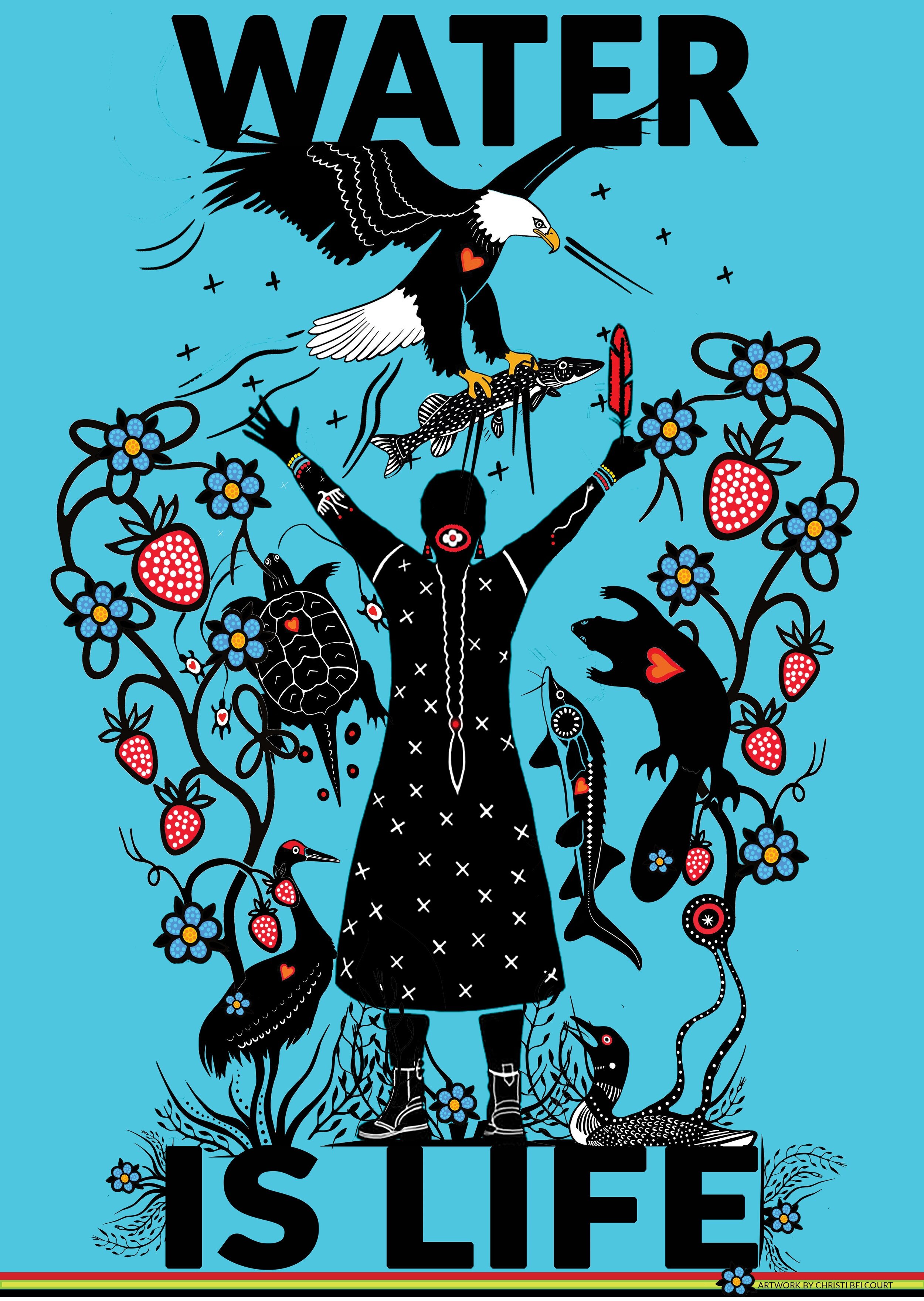
A look into what Indigenous communities in the upper Midwest are doing to conserve & protect water
2022 National Week of Action for MMIW

The National Partners Work Group on Missing and Murdered Indigenous Women (MMIW) and the MMIW Family Advisors are organizing a National Week of Action (April 29-May 5, 2022) to call the nation and the world to action in honor of missing and murdered Indigenous women. Take action by participating in these virtual events, exploring our list of resources, and organizing additional actions in your communities on and around May 5th. Join us in saying ‘enough is enough’—not one more stolen sister.

A MESSAGE FROM CHIEF ARVOL LOOKING HORSE
A “disease of the mind” has set in world leaders and many members of our global community, with their belief that a solution of retaliation and destruction of peoples will bring peace.
In our Prophecies it is told that we are now at the crossroads: Either unite spiritually as a global nation or be faced with chaos, disasters, diseases, and tears from our relatives’ eyes.
We are the only species that is destroying the source of life, meaning Mother Earth, in the name of power, mineral resources, and ownership of land. Using chemicals and methods of warfare that are doing irreversible damage, as Mother Earth is becoming tired and cannot sustain any more impacts of war.
I ask you to join me in this endeavor. Our vision is for the peoples of all continents, regardless of their beliefs in the Creator, to come together as one at their Sacred Sites.
Interior Department Renaming Sites With Offensive Native American Names
28 lakes, creeks, rivers and other geographical features in Wisconsin being renamed.
The U.S. Department of the Interior is requesting public input on new names for more than 650 geographic features with racially offensive names.
Comments: https://www.regulations.gov/
In November, DOI Secretary Deb Haaland signed Secretarial Order 3404 declaring a word that originated as an Algonquin term for “woman” a derogatory name. Its meaning has shifted after centuries of use by white people as an offensive term for Indigenous women.
“It’s such a derogatory and negative thing to call a woman,” Doud said. “We’re resilient people, and it’s only fair to change the name to something that isn’t so racist.”
The federal order outlined steps for removing the term from federal and state lands, one of the steps included forming the Derogatory Geographic Names Task Force.
By March, the task force identified 664 geographical features — such as creeks, lakes, rivers and valleys — across the country that use the term and proposed five new names for each site. The complete list of places and their suggested new names are available as both a PDF and an interactive map.
The 28 sites in Wisconsin span 19 counties.
The federal government will manage the process, but the Wisconsin Department of Natural Resources is helping to solicit input and will review proposed names to avoid duplicating the names of nearby geographic features.
“That process can easily take over a year to get that accomplished. This kind of puts it on a fast track,” Goodwill said.
Under the new order, sites with the word in their title would bypass the state process.
But even before the order, many Wisconsin counties were already trying to eliminate the term.
In 2019, Dane County changed the name of a bay on Monona Lake to Wicawak, the Ho-Chunk word for muskrat. And last year, a lake in Oneida and Vilas counties near the Lac du Flambeau reservation was changed to Amber Lake.
John D. Johnson, Sr., president of the Lac du Flambeau Band of Lake Superior Chippewa, said the old name was a dishonor to Native women.
“Here in Lac du Flambeau — and I can speak for other reservations too — we put our women on a pedestal,” Johnson said. “We appreciate everything they do for us, because if it wasn’t for the woman, none of us would be here, right?”
People had been trying to change the name for more than 20 years, but nothing ever happened, Johnson said.
“What we did with the Lakes Association was pretty cool because they had come right to our (Tribal) Council room and we had talked together, we collaborated and that’s what needed to be done,” Johnson said.
Together they submitted a formal petition to the Wisconsin Geographic Names Council and about six months later, residents and tribal members had collectively renamed the lake Amber Lake.
Doud said they initially chose the name Ikwe, which means “woman” in Ojibwe, but some residents felt it might be difficult to pronounce. Together they agreed on Amber because of the golden color of the Tamarack trees that surround the lake.
Now communities will have the backing of the federal government to speed up the process. And the movement to remove offensive terms from geographic features will not stop with this one word.
In November, Haaland also signed Secretarial Order 3405, creating a federal advisory committee that will identify and recommend new names for sites that use other racial slurs and derogatory terms. In the past, similar bodies have renamed geographic features that used the N-word or a pejorative term for Japanese people.
“This is a good move for the future. I think it’s overdue,” said Goodwill, who is a member of the Menominee Nation. “I think it goes along with having our first Native American secretary of the Interior.”
Public input on the current list will be accepted until April 25. You can submit comments online, using the docket number DOI-2022-0001. You can also mail your written comments to: Reconciliation of Derogatory Geographic Names, MS-511, U.S. Geological Survey, 12201 Sunrise Valley Dr., Reston, VA 20192. Be sure to include the docket number.
Listen to the WPR report here.
‘A good move for the future’: Federal officials ask for public input in renaming 28 sites with derogatory names in Wisconsin was originally published by Wisconsin Public Radio.
NO MORE PIPELINE BLUES (ON THIS LAND WHERE WE BELONG)
NO MORE PIPELINE BLUES (ON THIS LAND WHERE WE BELONG)
FEATURING WAUBANEWQUAY, WINONA LADUKE, DAY SISTERS, MUMU FRESH, PURA FE, SONI MORENO, JENNIFER KREISBERG, INDIGO GIRLS, BONNIE RAITT AND JOY HARJO.
Film Directed by Keri Pickett | Edited by River Akemann & Keri Pickett
Music Written & Produced by Larry Long | Recorded by Brett Huus
Cinematographers: Sarah Littleredfeather, River Akemann & Keri Pickett
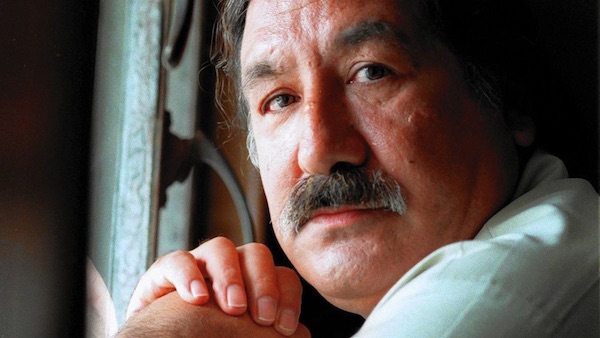
By Gerry Adams (for Léargas)
This Christmas take a moment to think about Leonard Peltier.
Leonard was convicted in 1977 of the murder in 1975 of two FBI agents during a confrontation at the Pine Ridge Reservation in South Dakota. Two others who were charged with the murders were found not guilty by reason of self-defence. Peltier has always denied involvement in the two deaths. He has been in prison for almost 45 years.
In the years since then serious and significant questions have arisen over the evidence produced by the prosecution at the trial. A witness who recanted her account claimed she had been forced into making a statement by the FBI. A ballistics expert who linked Peltier’s weapon to the murders was reprimanded by the federal court for lying.
In July this year James H. Reynolds, the former US Attorney General whose office handled the prosecution and appeal in the Leonard Peltier case, appealed for his sentence to be commuted. In a letter to President Joe Biden he said: “With time, and the benefit of hindsight, I have realised that the prosecution and continued incarceration of Mr Peltier was and is unjust.”
In October Amnesty International issued an Urgent Action notice calling for clemency for Leonard Peltier. Amnesty pointed out that “Leonard Peltier has been imprisoned in the USA for over 44 years, some of which was spent in solitary confinement, serving two life sentences for murder despite concerns over the fairness of his trial. He has always maintained his innocence. He is 77 years old and suffers from a number of chronic health ailments, including one that is potentially fatal.”
“In October US Congress members Raúl M. Grijalva, Barbara Lee, Jesús Garcia, Cori Bush, Emanuel Cleaver II, Jared Huffman, Teresa Leger Fernández, Rashida Tlaib, Pramila Jayapal, Betty McCollum, and Melanie Stansbury — wrote a joint letter to you requesting the expedited release of Leonard Peltier from the Coleman Federal Correctional Complex in Florida and requesting that Mr Peltier be granted clemency.”
Calls for Leonard Peltier’s release have also been supported by international figures, including the late Nelson Mandela, former Irish President Mary Robinson and Archbishop Desmond Tutu.
Join us in urging compassion and clemency for Leonard Peltier. Write to:
President Joseph Biden
The White House
1600 Pennsylvania Ave NW
Washington, DC 20500, USA.
Native Lives Matter
National Day of Awareness for Missing & Murdered Indigenous Women, Girls, 2 Spirit Thursday, May 5, 2022

LN3: Seven Teachings of the Anishinaabe in Resistance
The South Shore of Lake Superior and Line 5: Impacts
https://www.facebook.com/RejectLine5/videos/1050867815489741
Shut Down Line 5 - Protect the Water!
https://www.facebook.com/WinonaLaDukeHonorTheEarth/videos/313448660748647
Menominee Indian Tribe No Back 40 Mine
https://www.facebook.com/NoBack40Mine
The Menominee Indian Tribe of Wisconsin, a federally recognized Indian Tribe, is indigenous to what is now known as Wisconsin and Upper Michigan. By the early 1800’s, the start of the treaty era, the Menominee occupied a land base estimated at 10 million acres; however, through a series of seven treaties entered into with the United States Government during the 1800’s, the Tribe witnessed its land base erode to little more than 235,000 acres today.
Our sacred place of origin exists within our 1836 treaty territory, at the mouth of the Menominee River which is located in the border cities of Menominee, MI and Marinette, WI. It was here, a mere 60 miles east of our present Menominee Indian Reservation, where our five main clans: ancestral Bear, Eagle, Wolf, Moose and Crane were transformed into human form and thus became the first Menominee.
As a result of our undeniable ties and long occupation of the Menominee River area, we have numerous sacred sites and burial mounds up and down the Menominee River, including the area of the proposed Back Forty Mine. Much like our brothers and sister in the NODAPL movement we also know that water is essential to life. The Menominee River is, in fact, the very origin of life for the Menominee people. It also provides life to Michigan and Wisconsin residents and the natural wildlife within the Great Lakes ecosystem. The harmful threats to this area and all who depend on it far outweigh the corporate interests of a Canadian exploratory company and justify the denial of the necessary permits for the proposed mine.
The Menominee Nation is steadfast in its opposition to the proposed mine and its commitment to preserving the Menominee River. We ask you to stand in solidarity with us as we continue our fight to protect our place of origin, our sacred sites, the wildlife, water and environment for future generations.

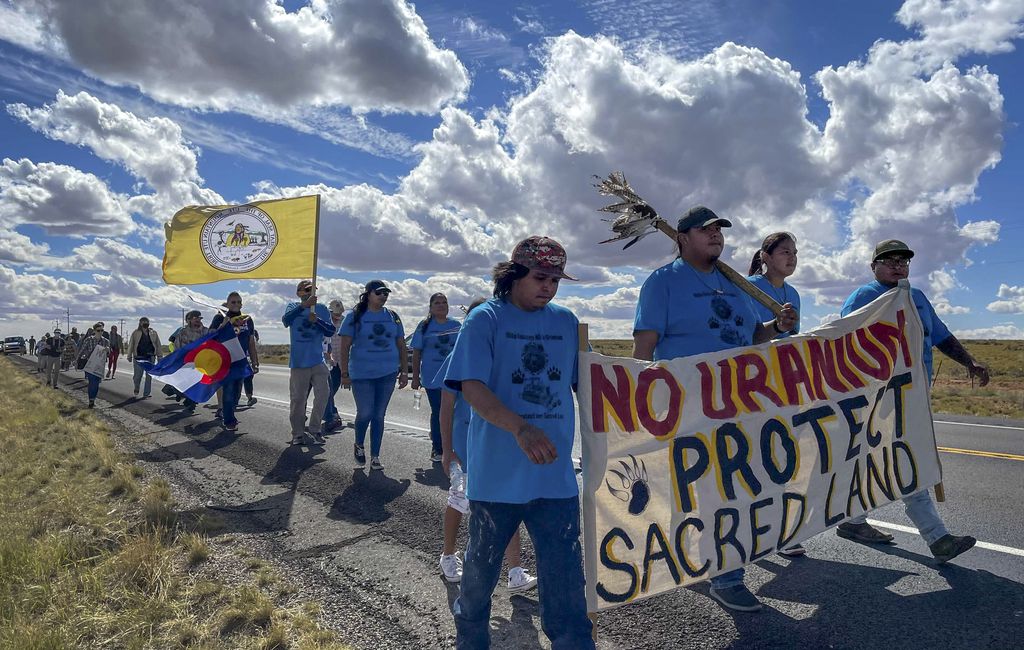
https://www.grandcanyontrust.org/white-mesa-uranium-mill
https://www.facebook.com/yo.nuche/videos/409028270945404
EPA faults uranium processor for not keeping Superfund waste covered
Energy Fuels Resources barred from accepting some radioactive material after federal authorities conclude the White Mesa facility has not been properly storing dangerous waste.
Clean Up The Mines




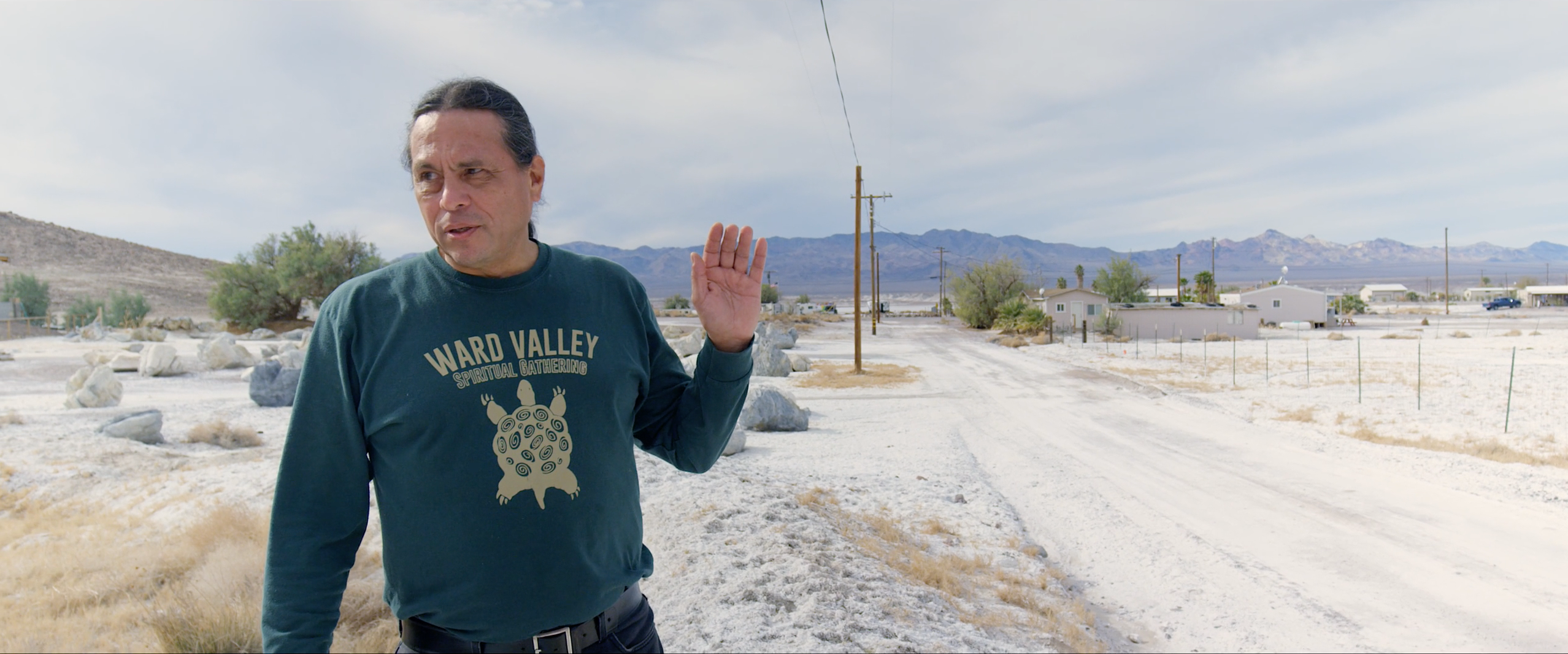



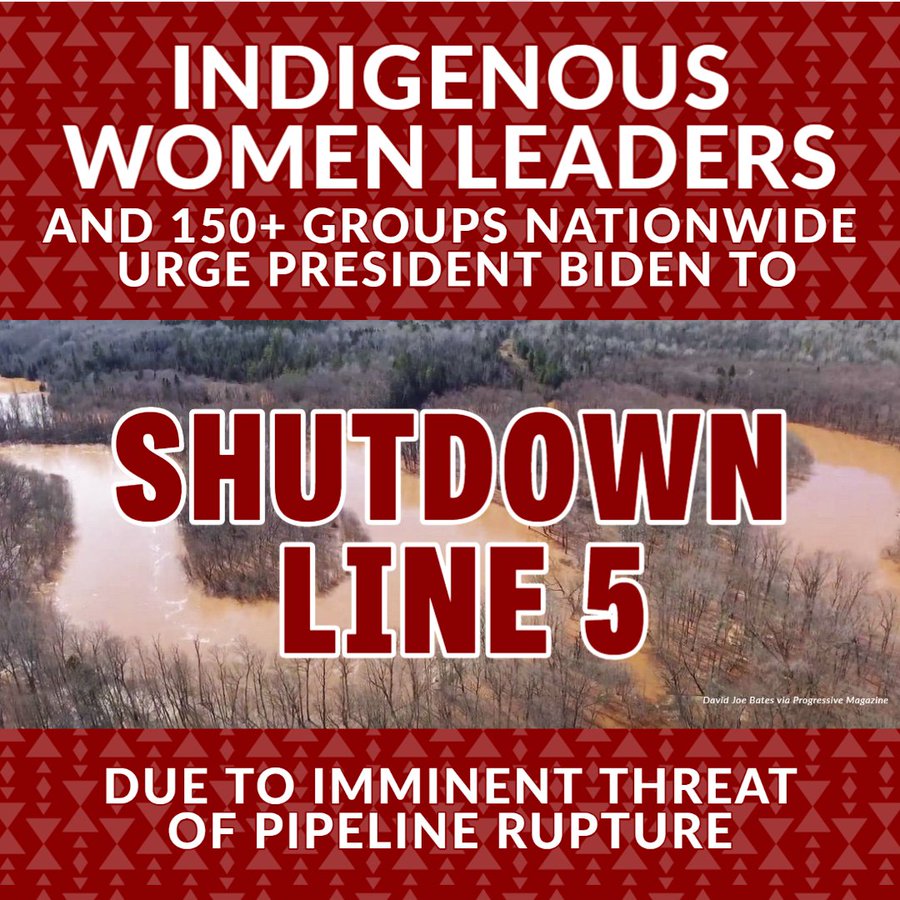
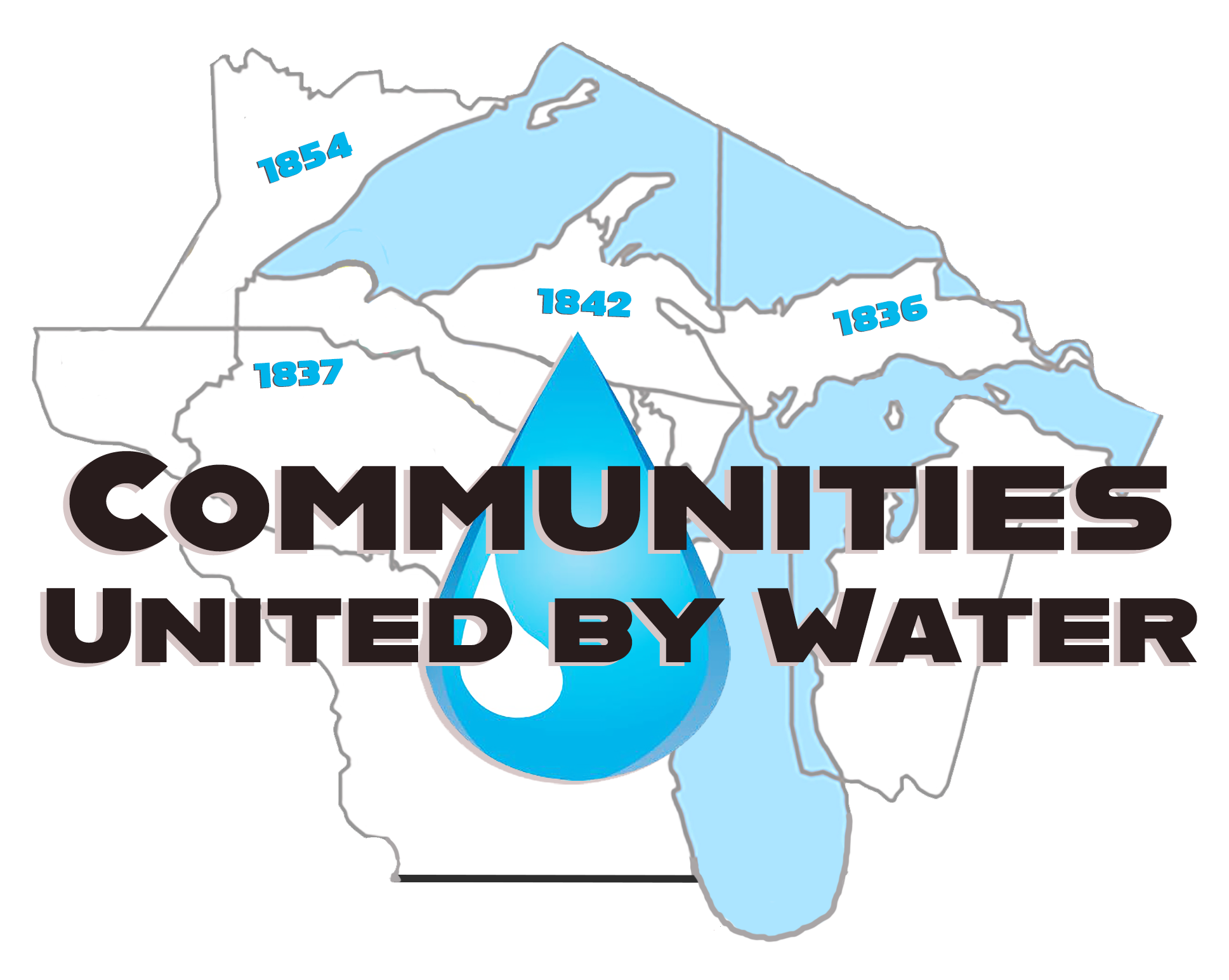









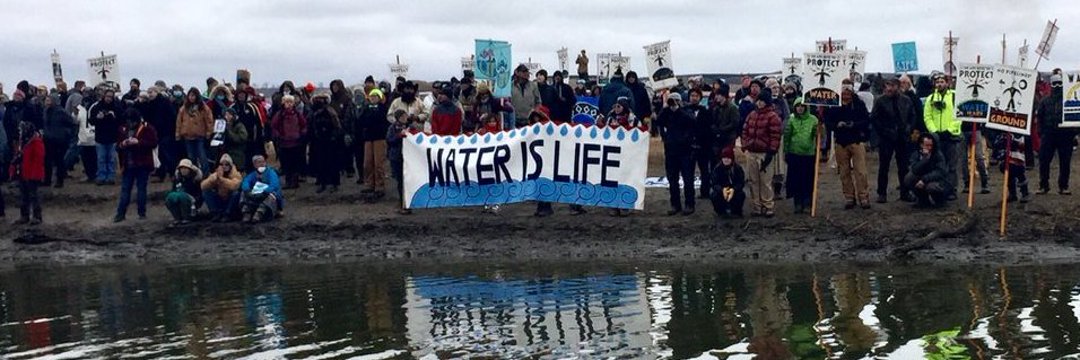
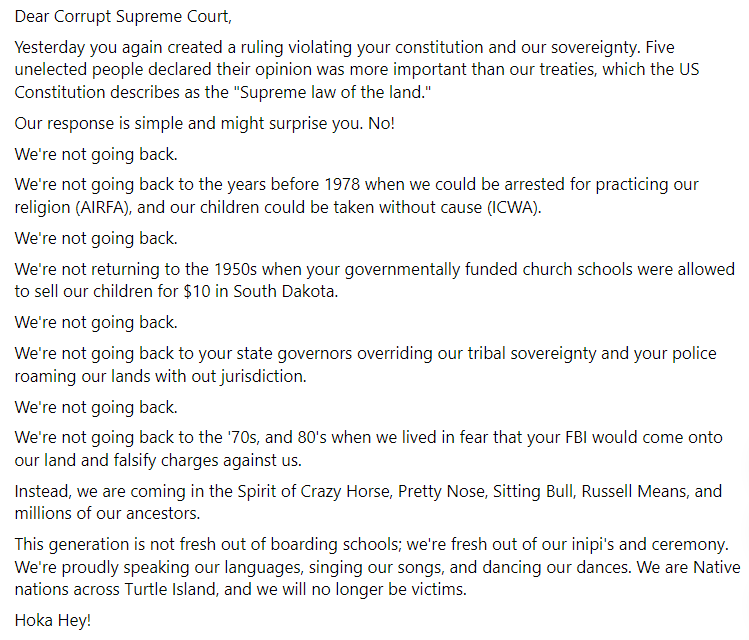
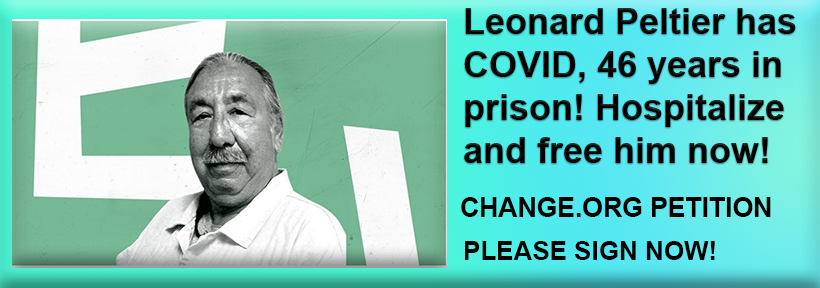
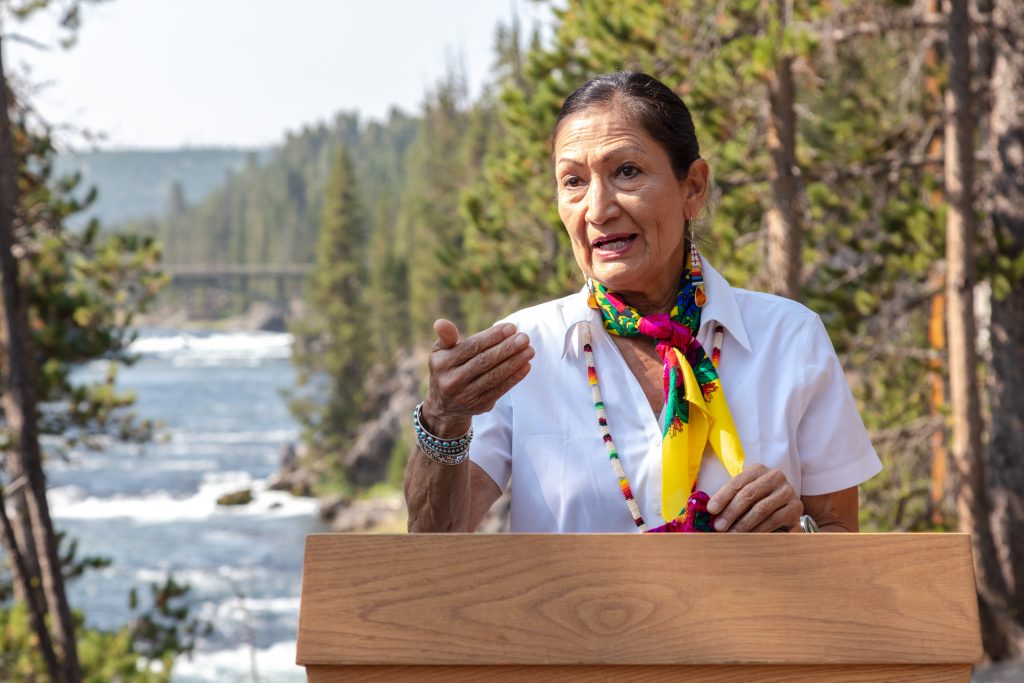
AL GEDICKS